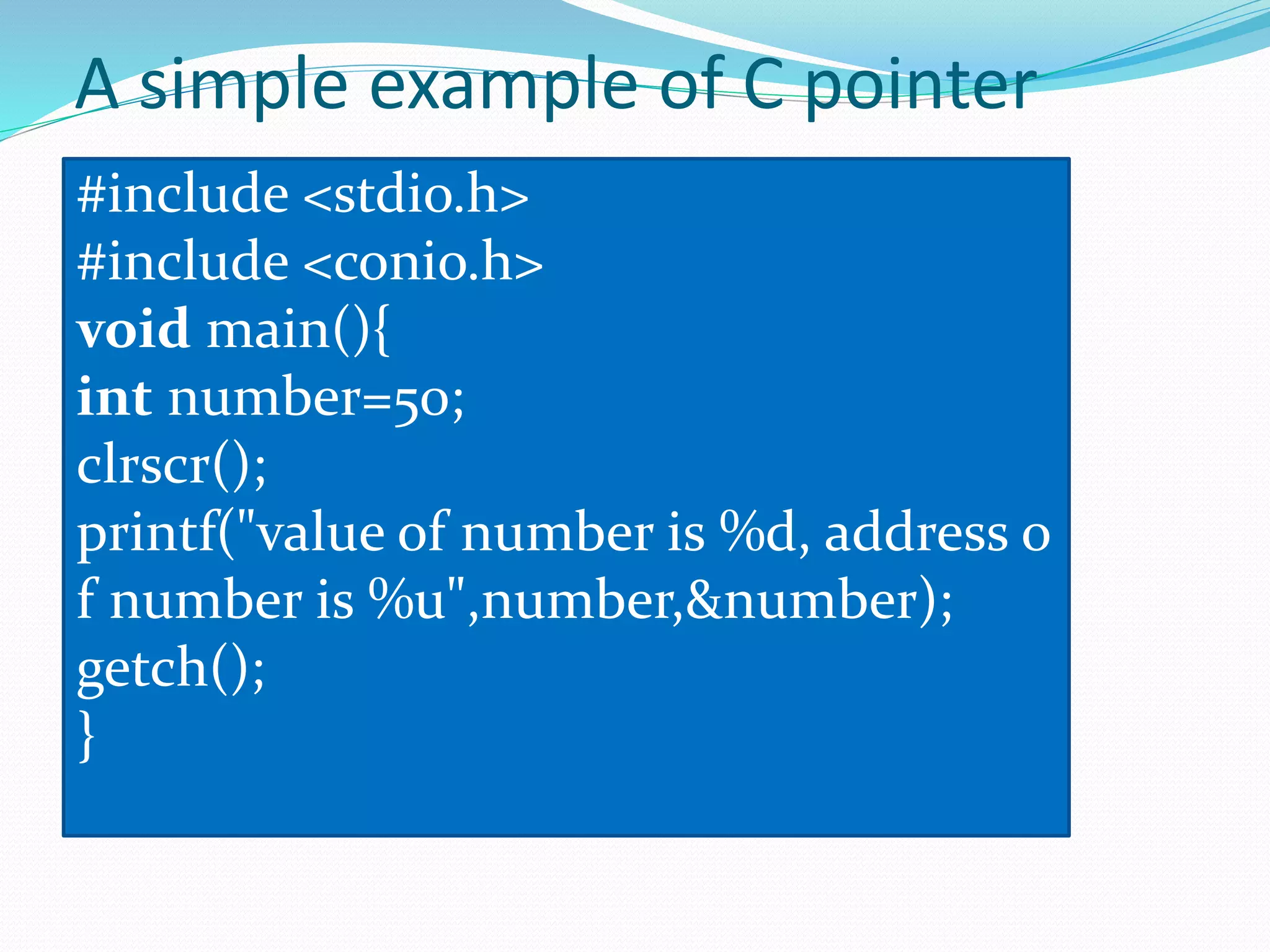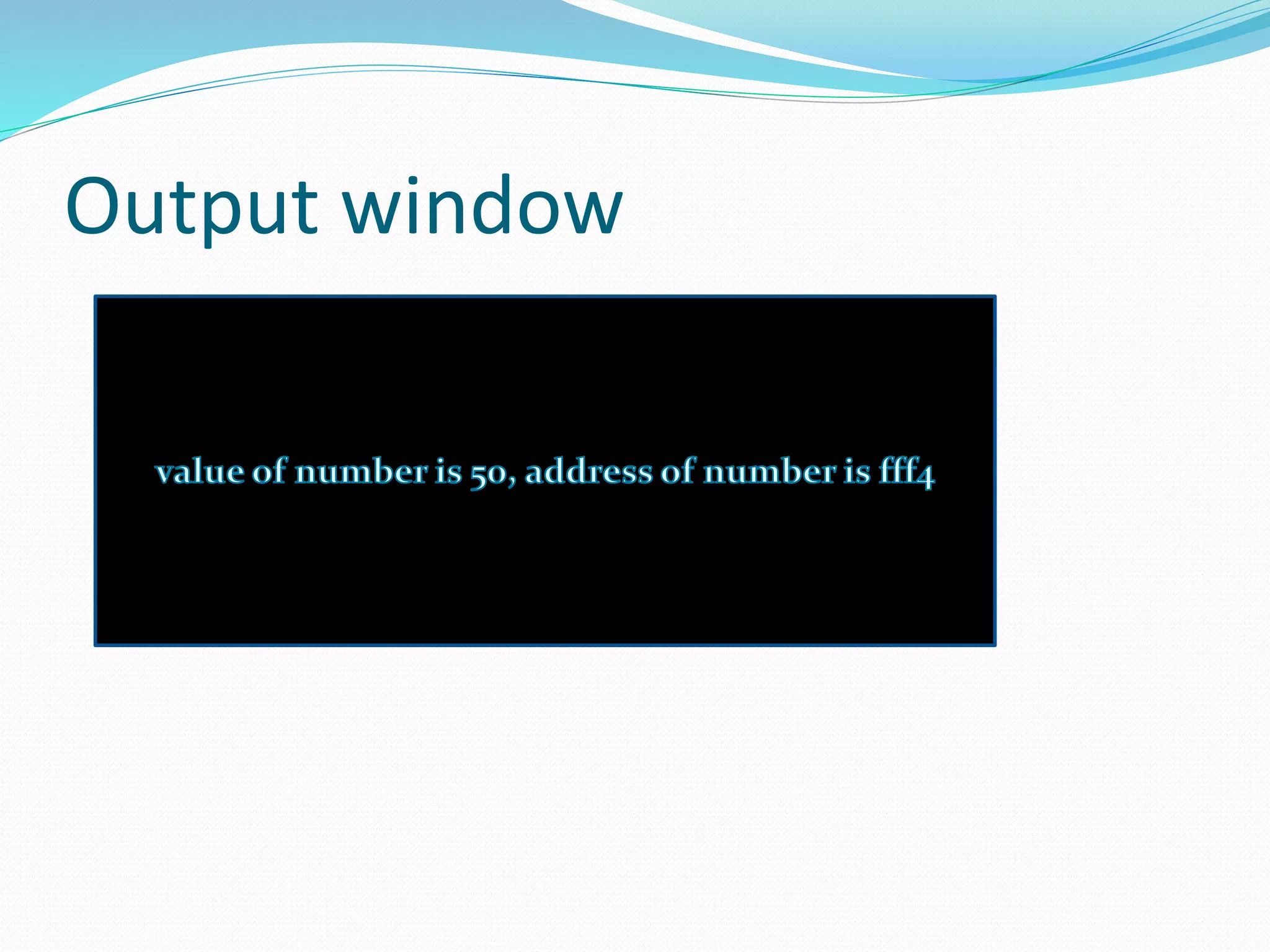C is a general-purpose programming language developed in the 1970s. It was created by Dennis Ritchie at Bell Labs to be used for the Unix operating system. Some key features of C include it being a mid-level language, supporting structured programming, having a rich standard library, and allowing for pointers and recursion. A simple "Hello World" program in C prints a message using printf and waits for input with getch. C supports various data types, operators, control structures like if/else and loops, functions, arrays, and pointers.

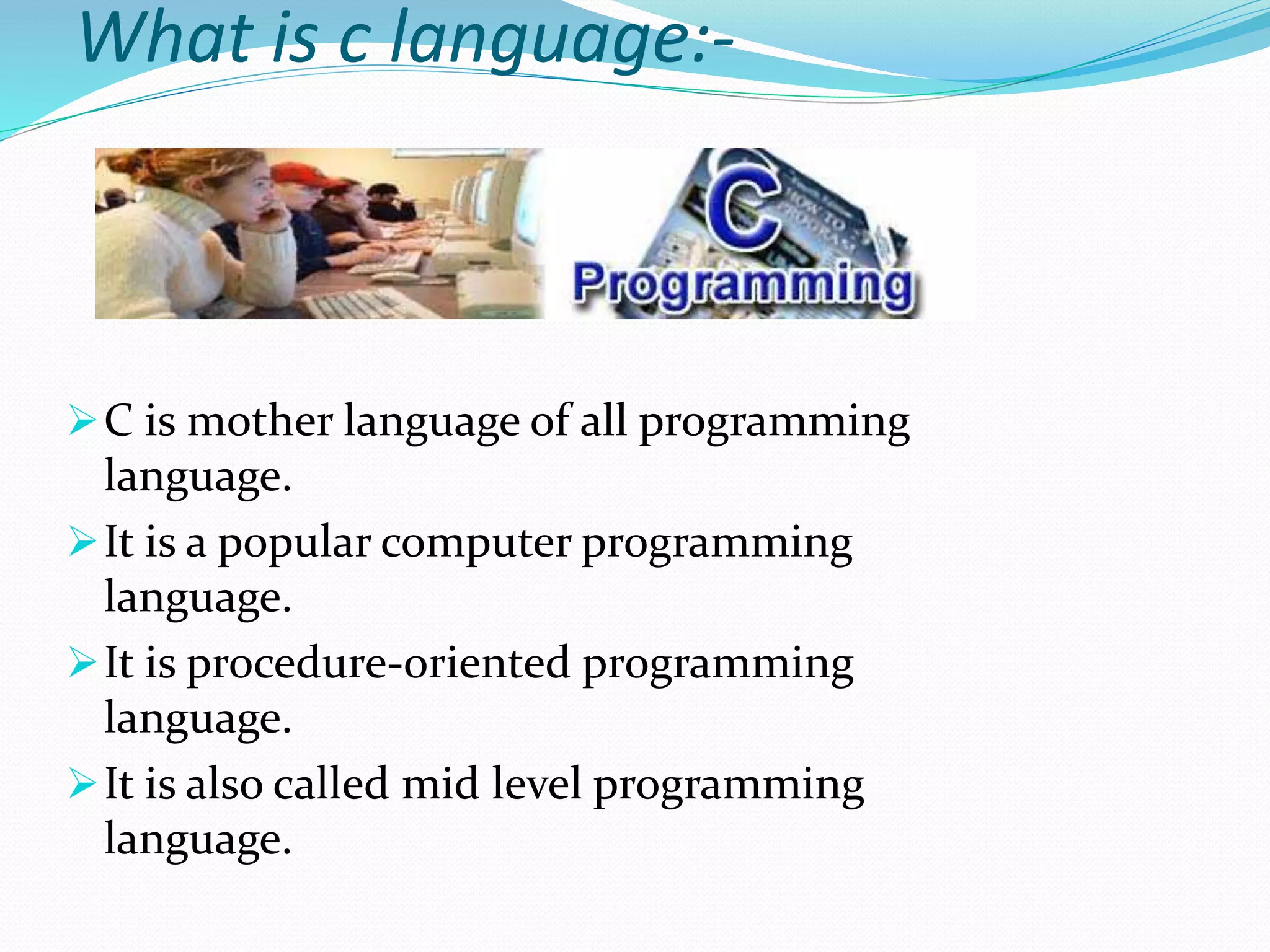
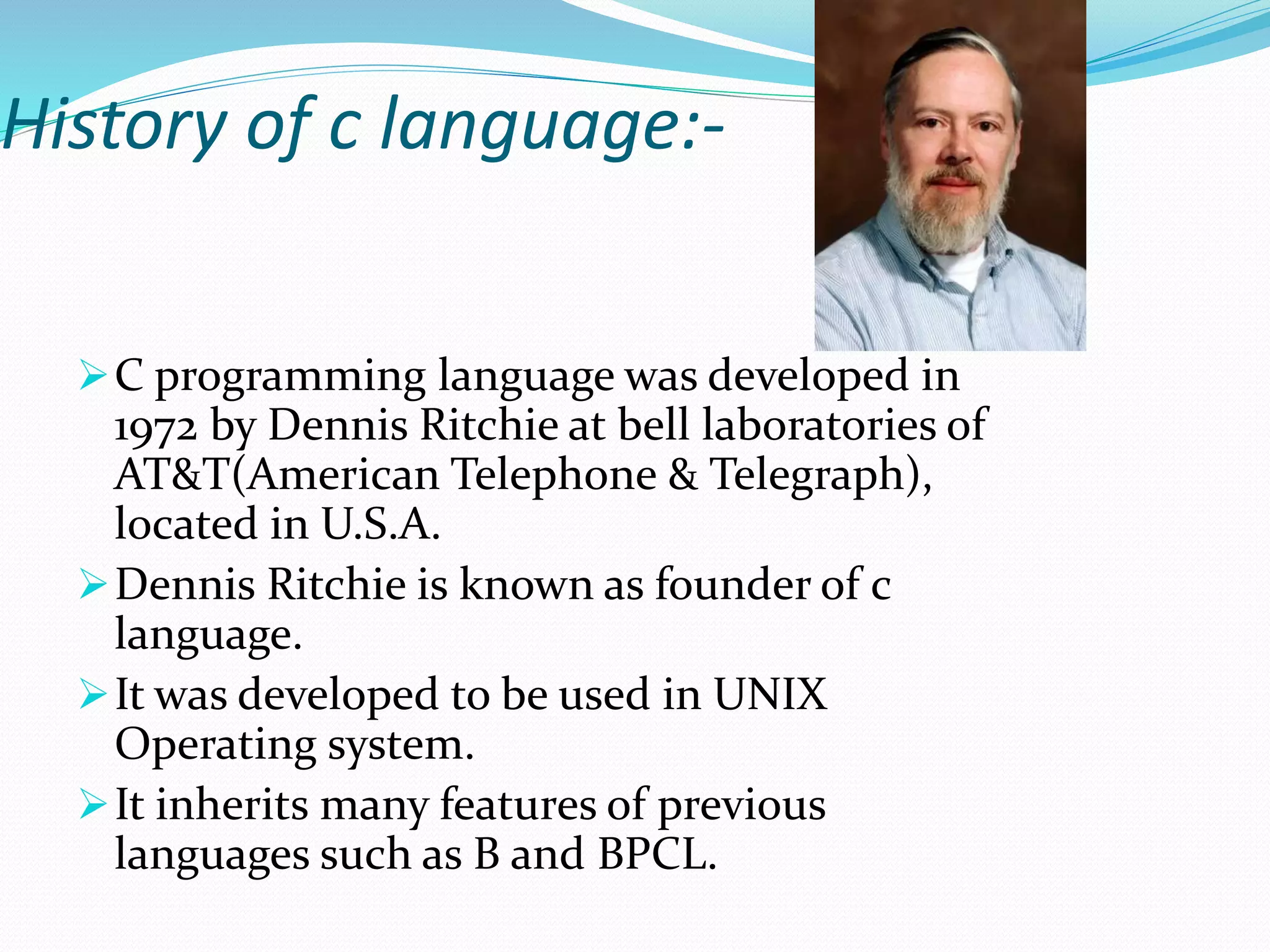
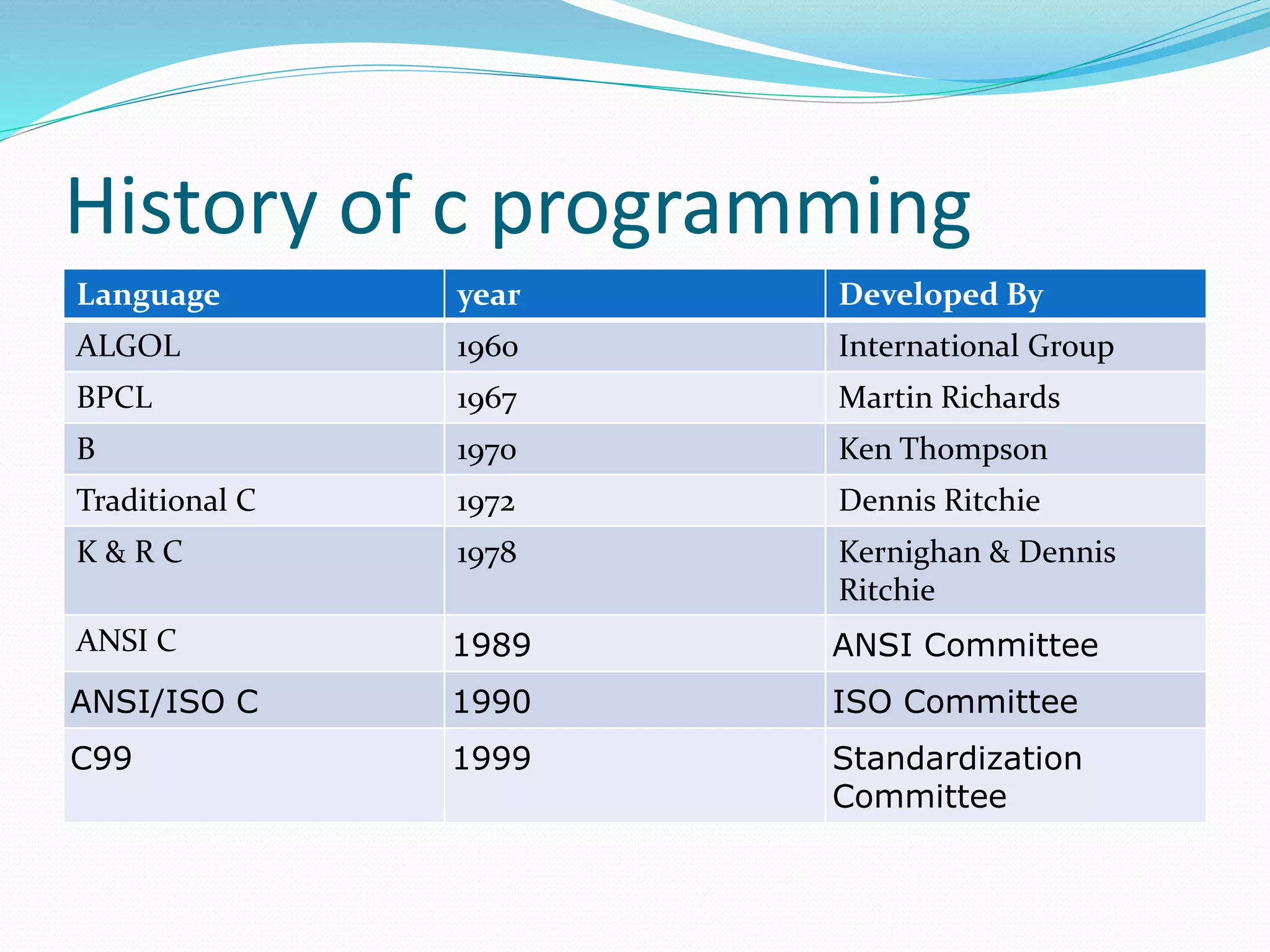
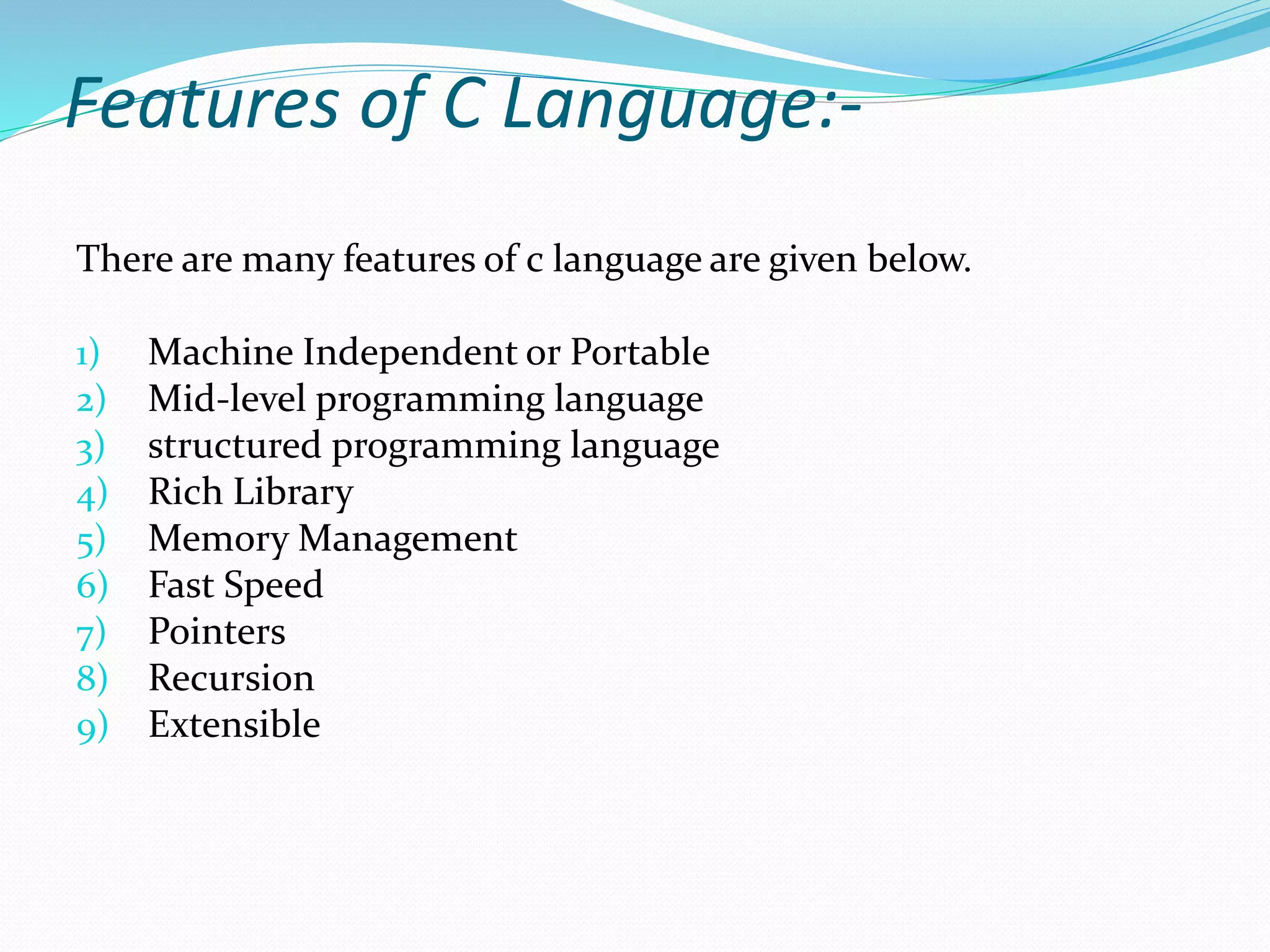
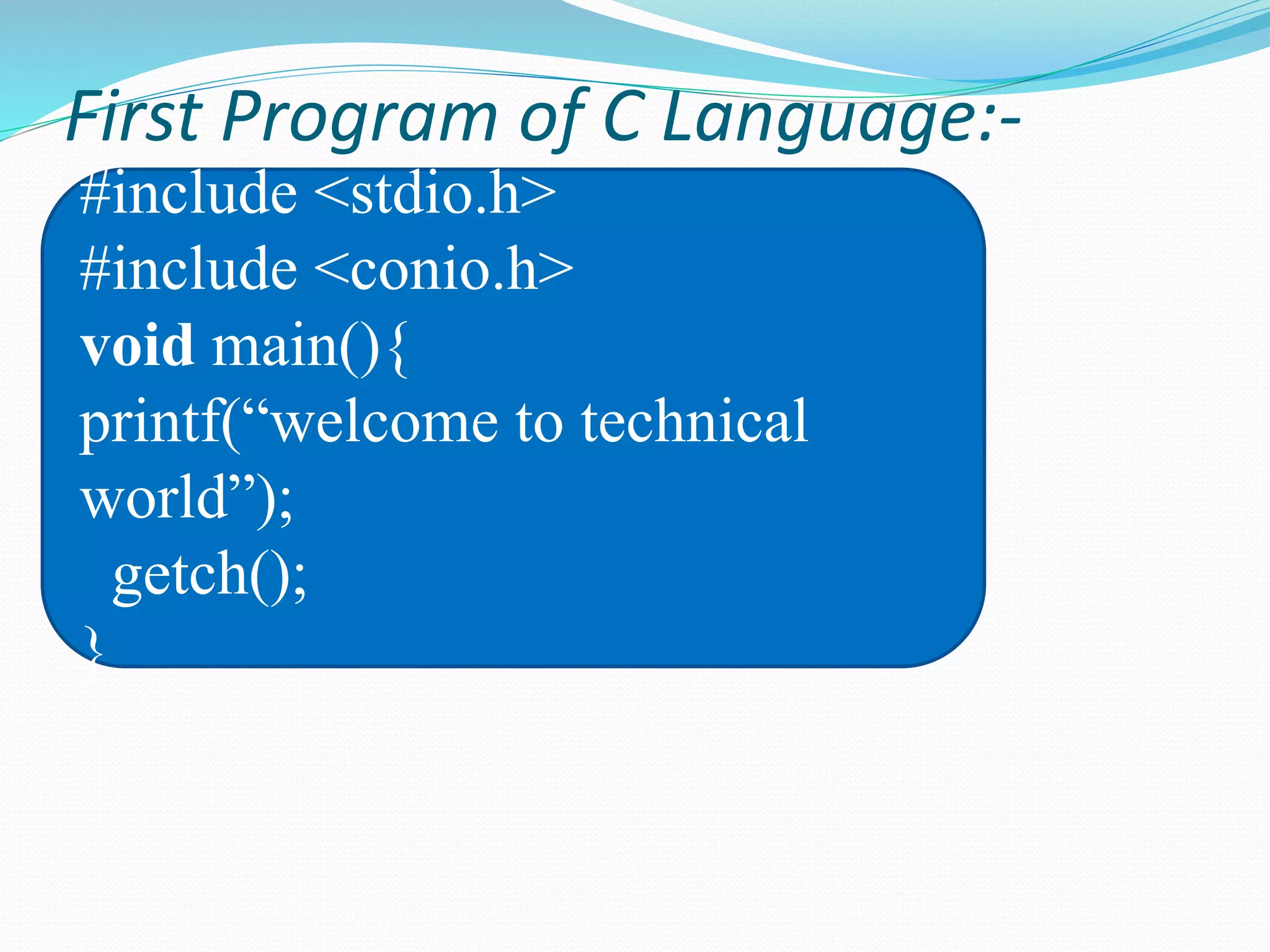
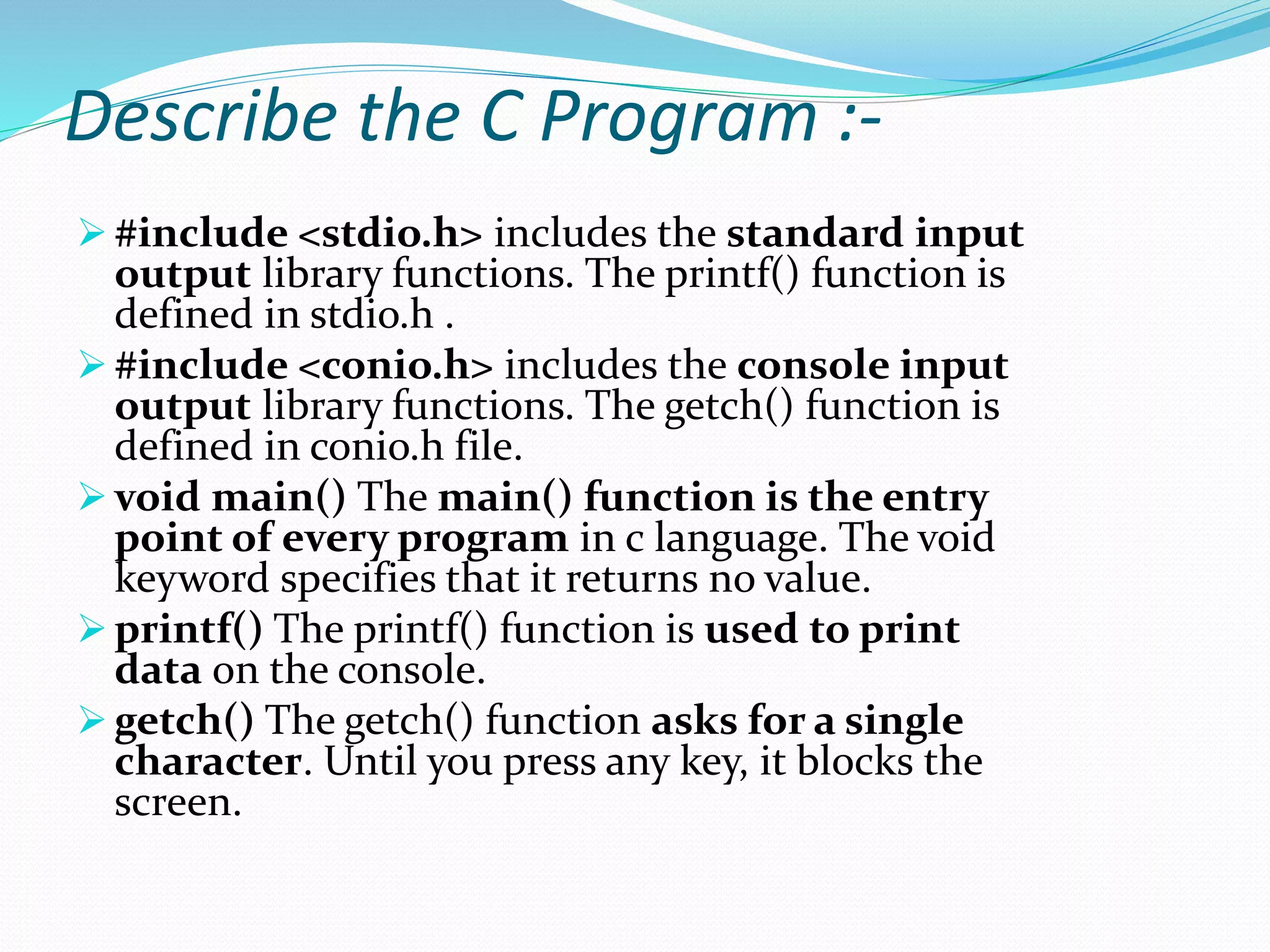
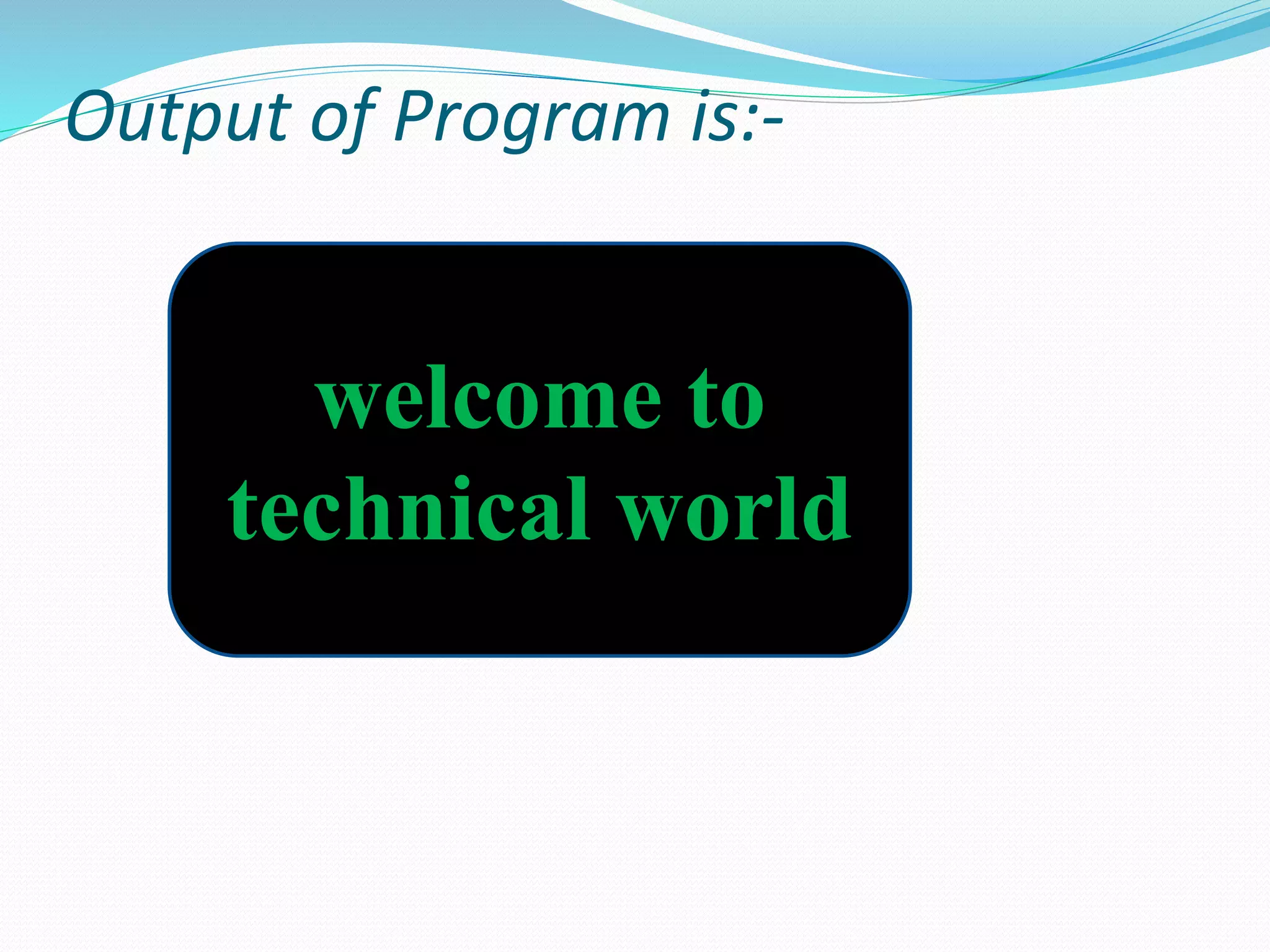
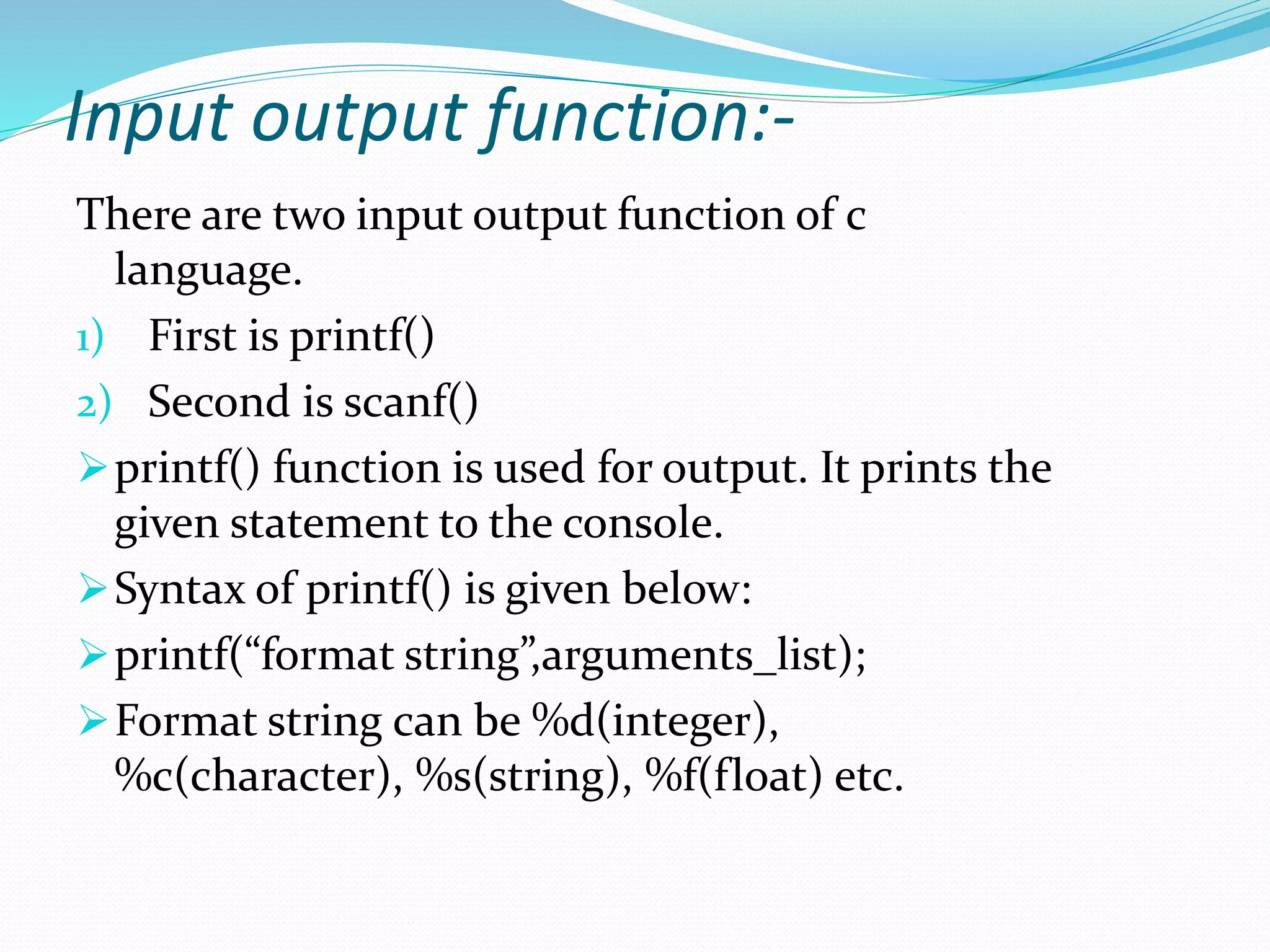
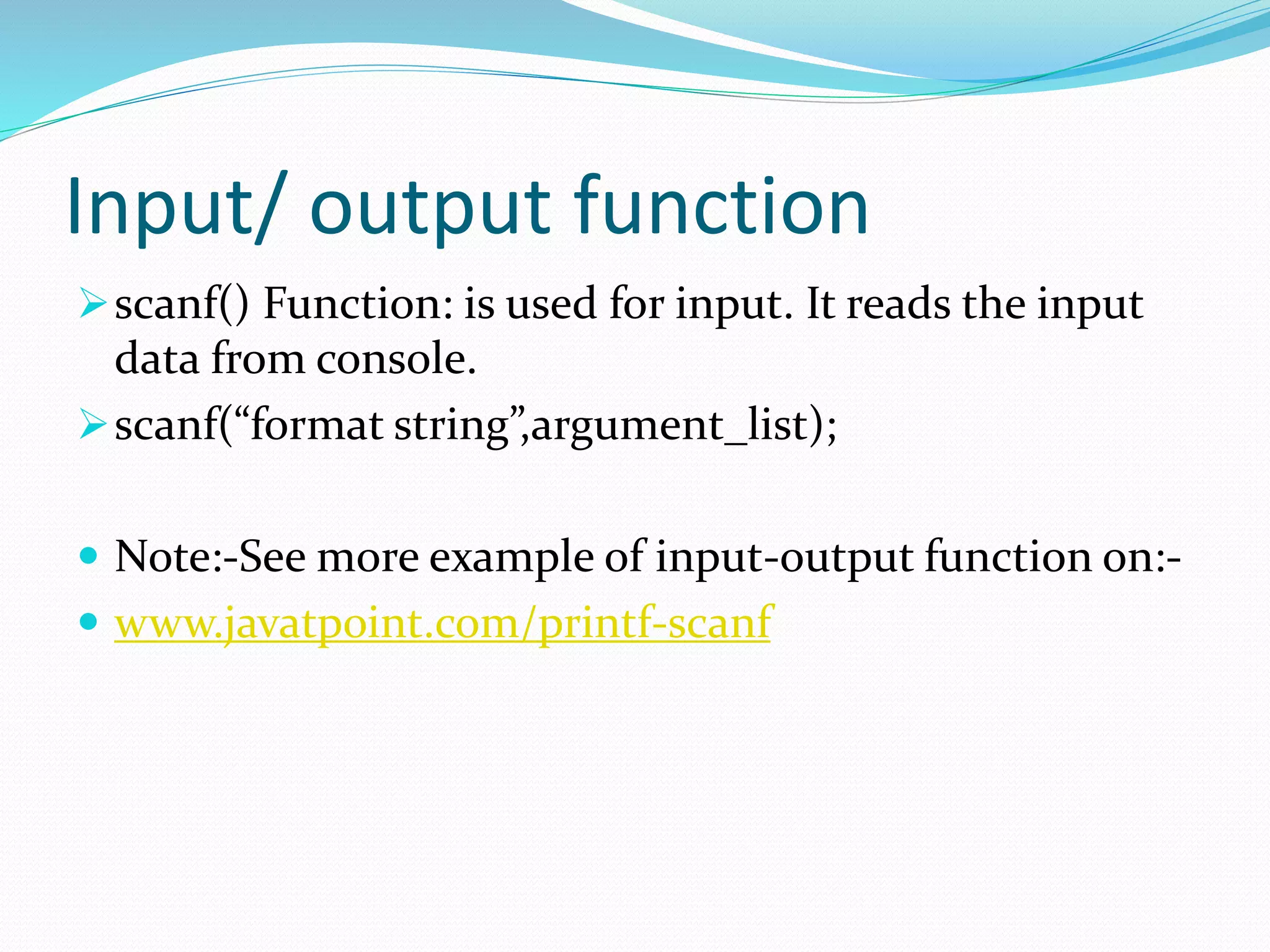
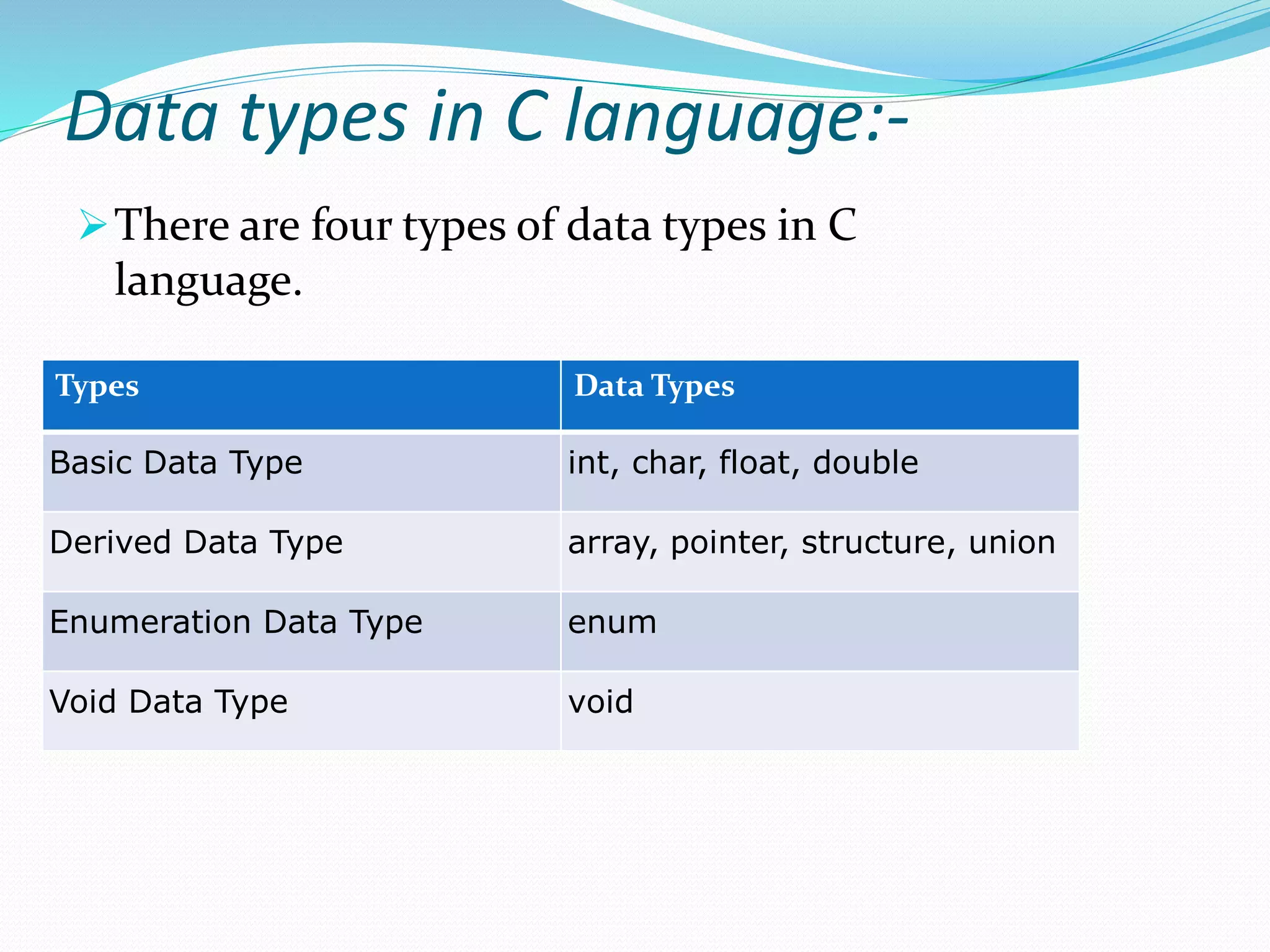
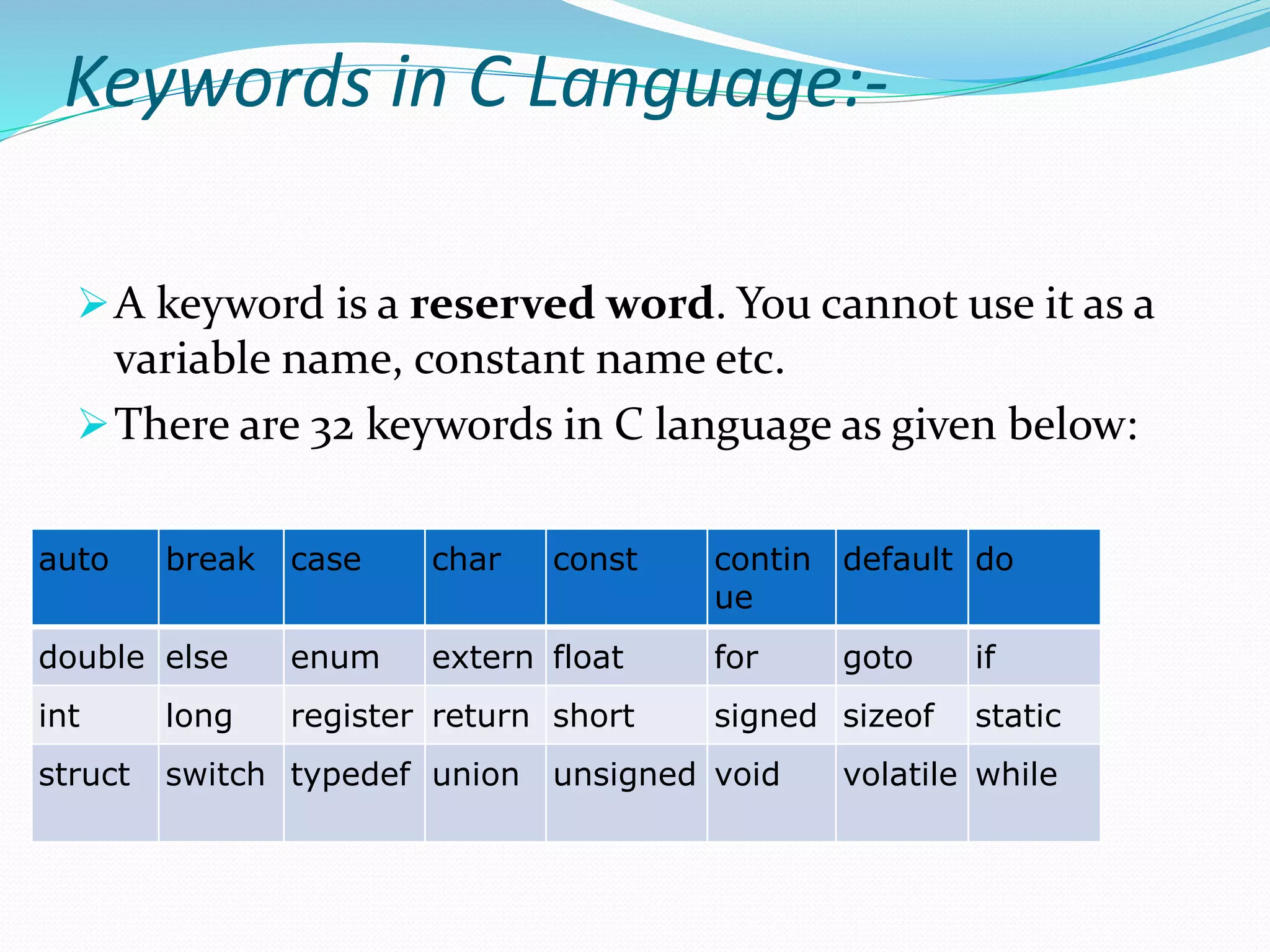
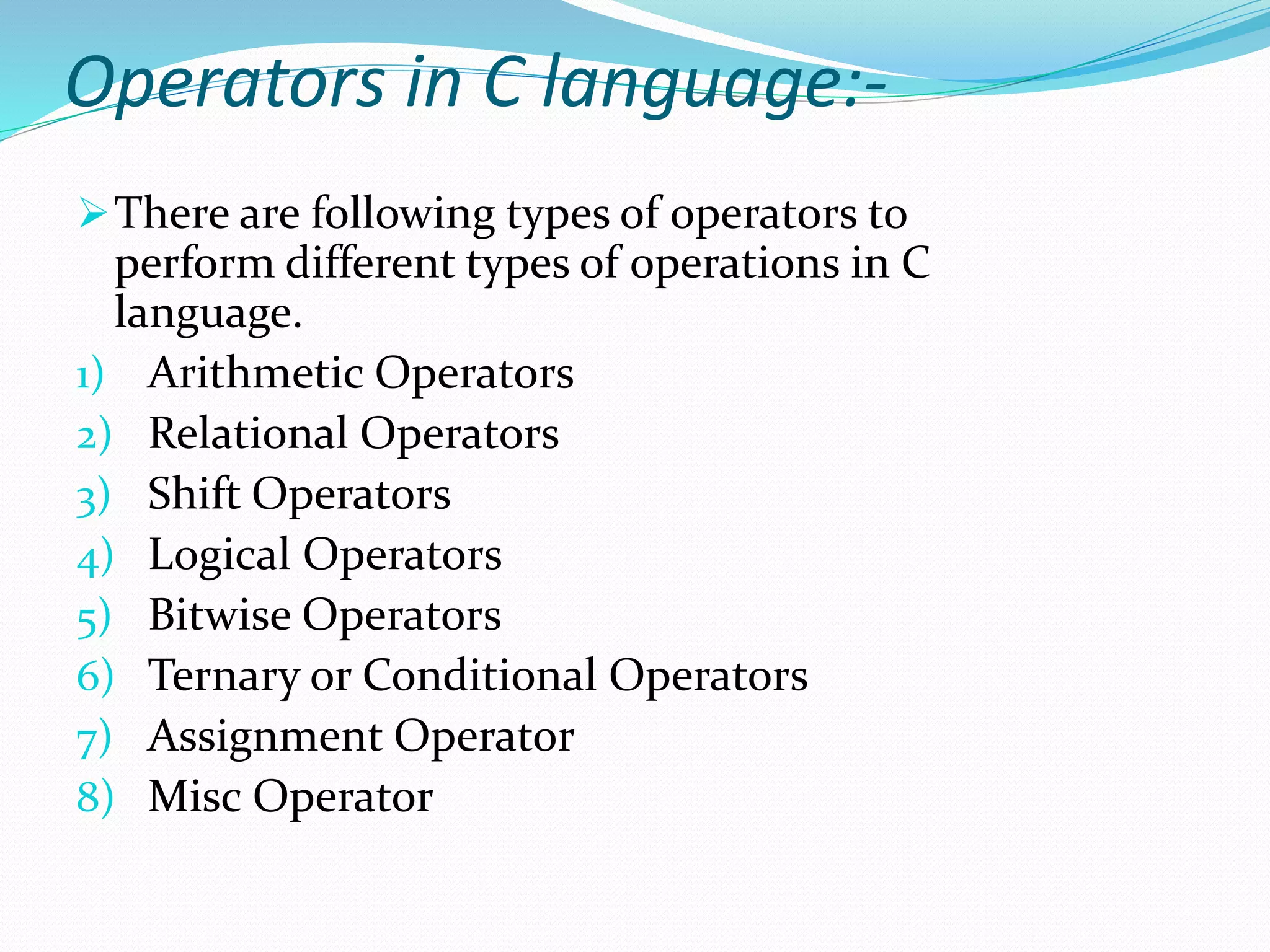
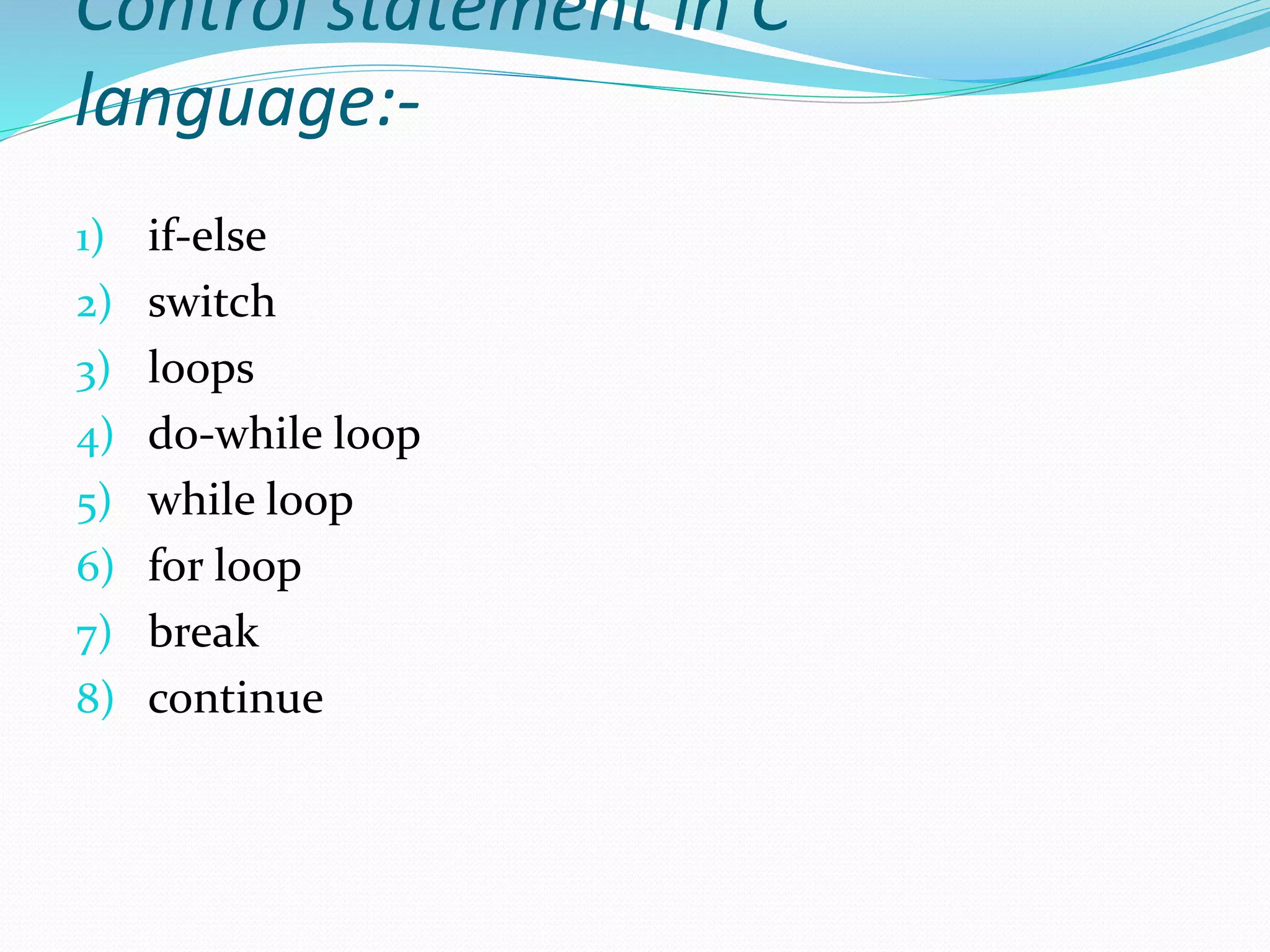
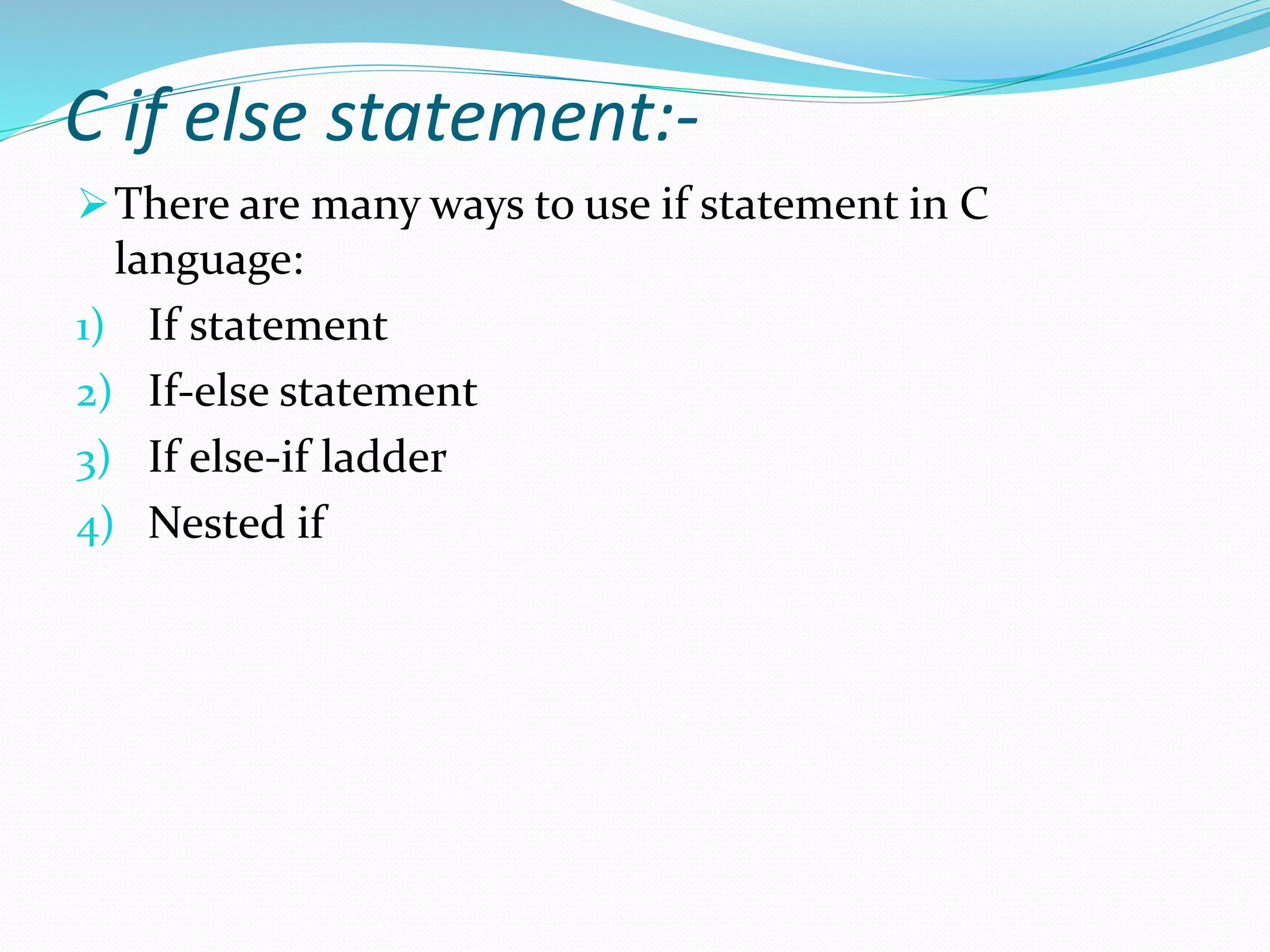
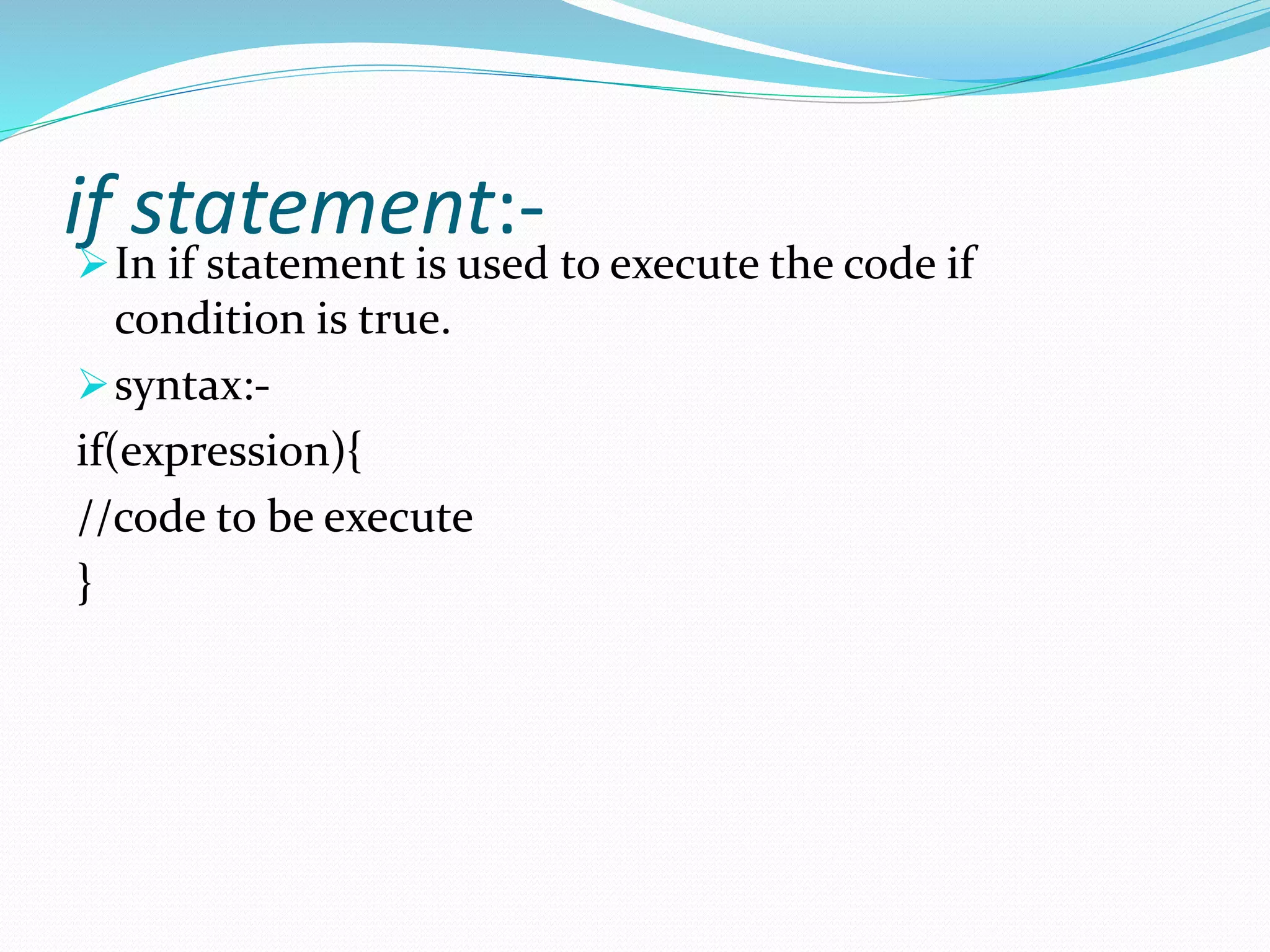
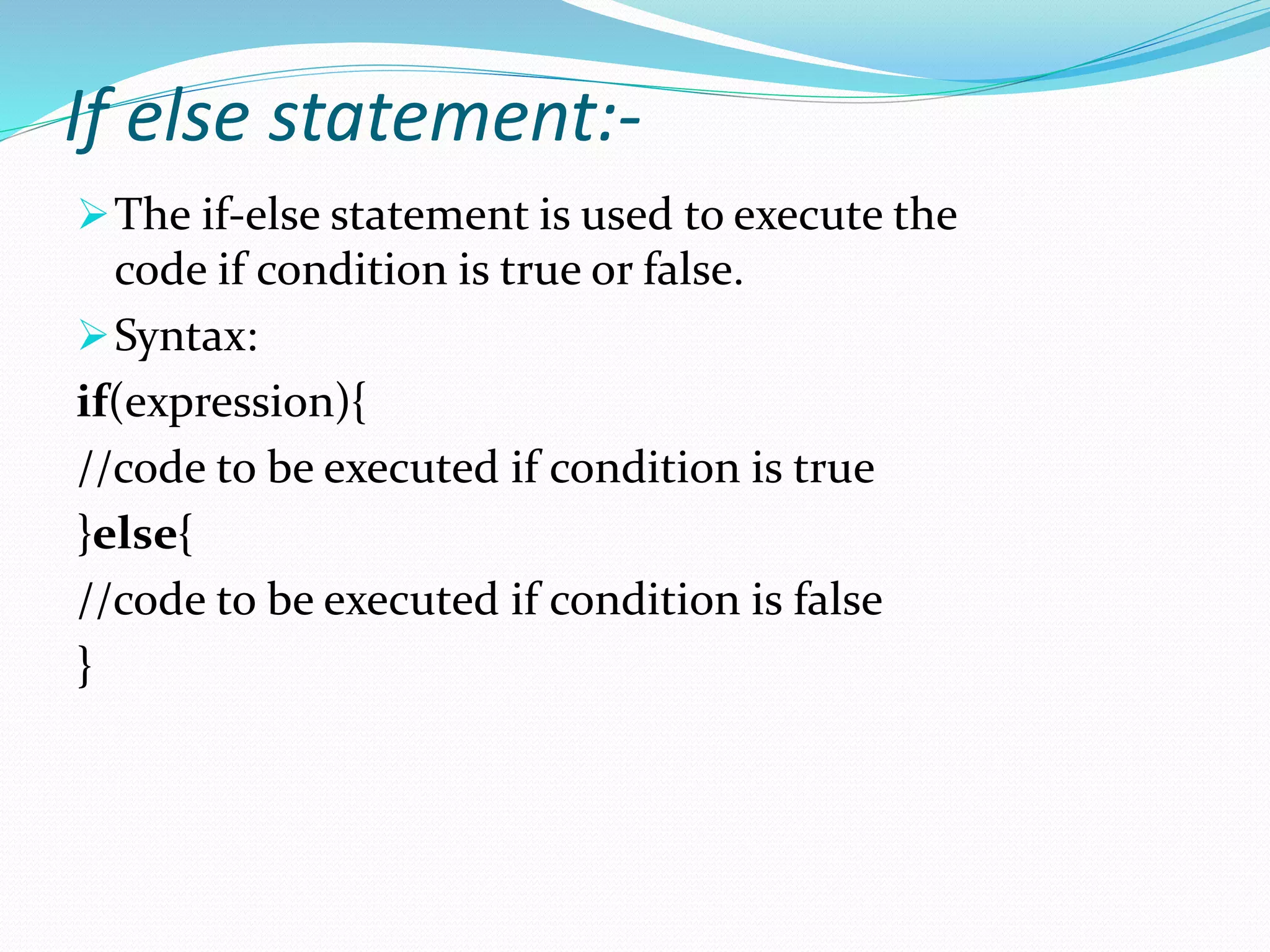

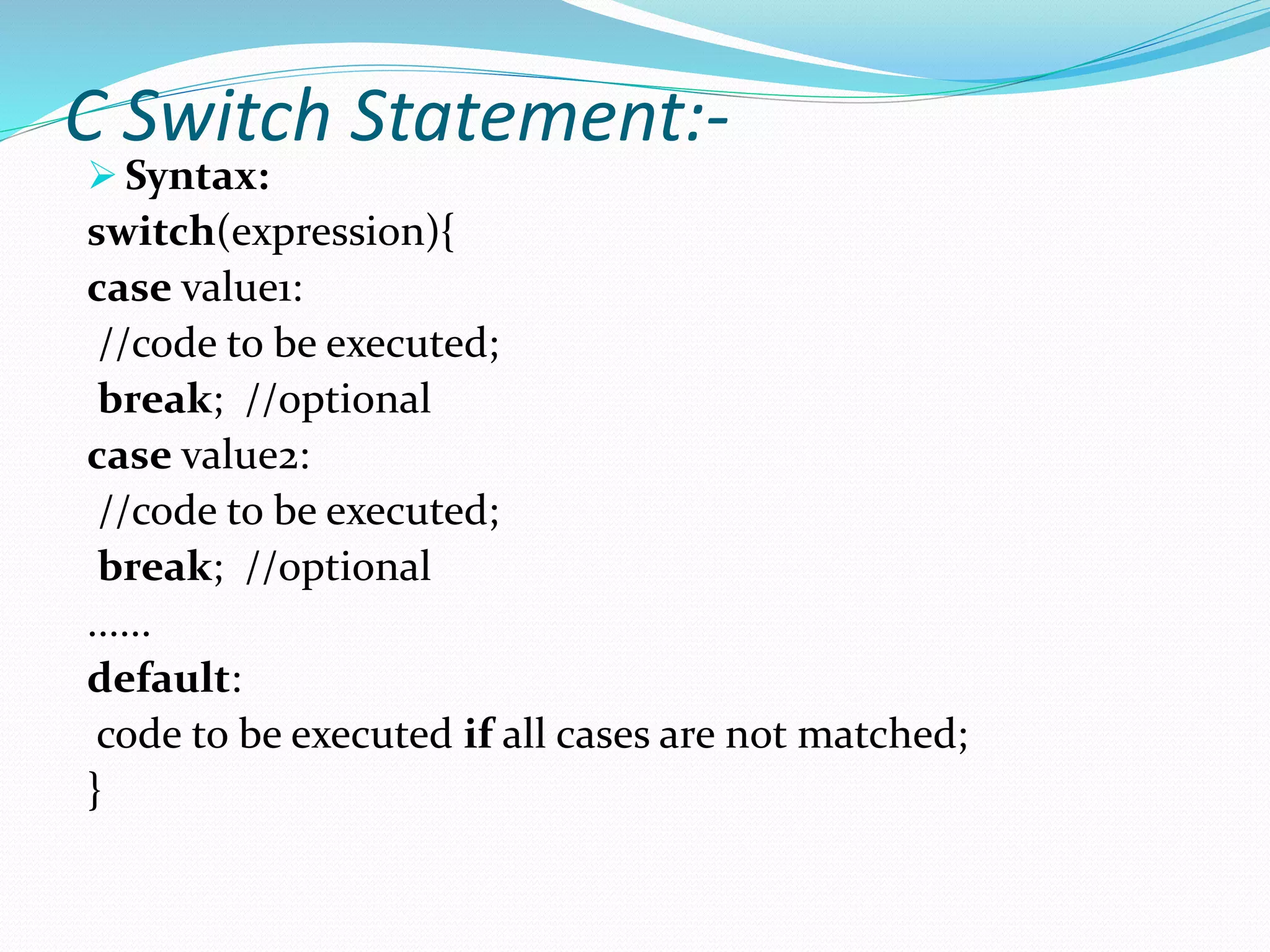

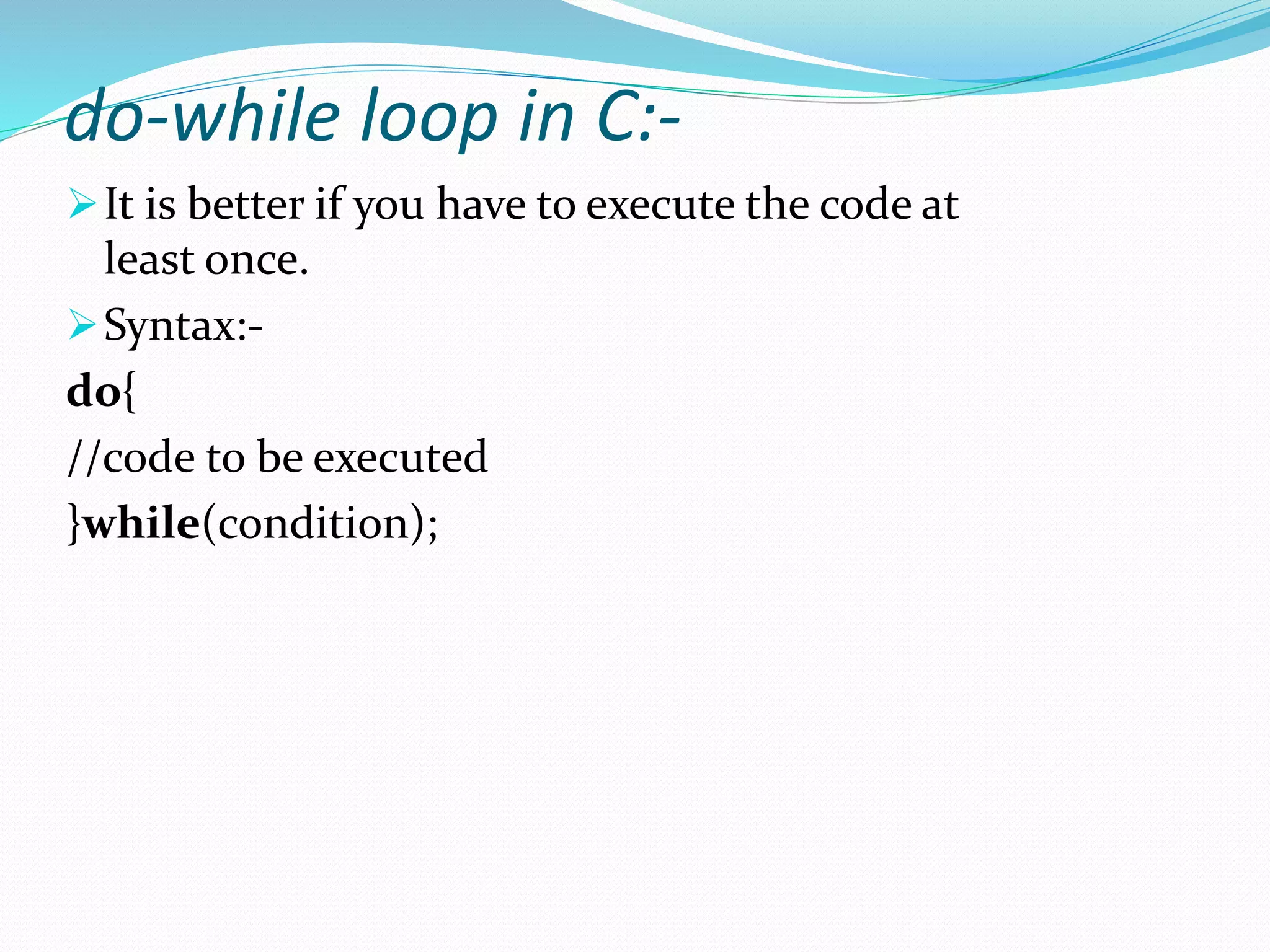
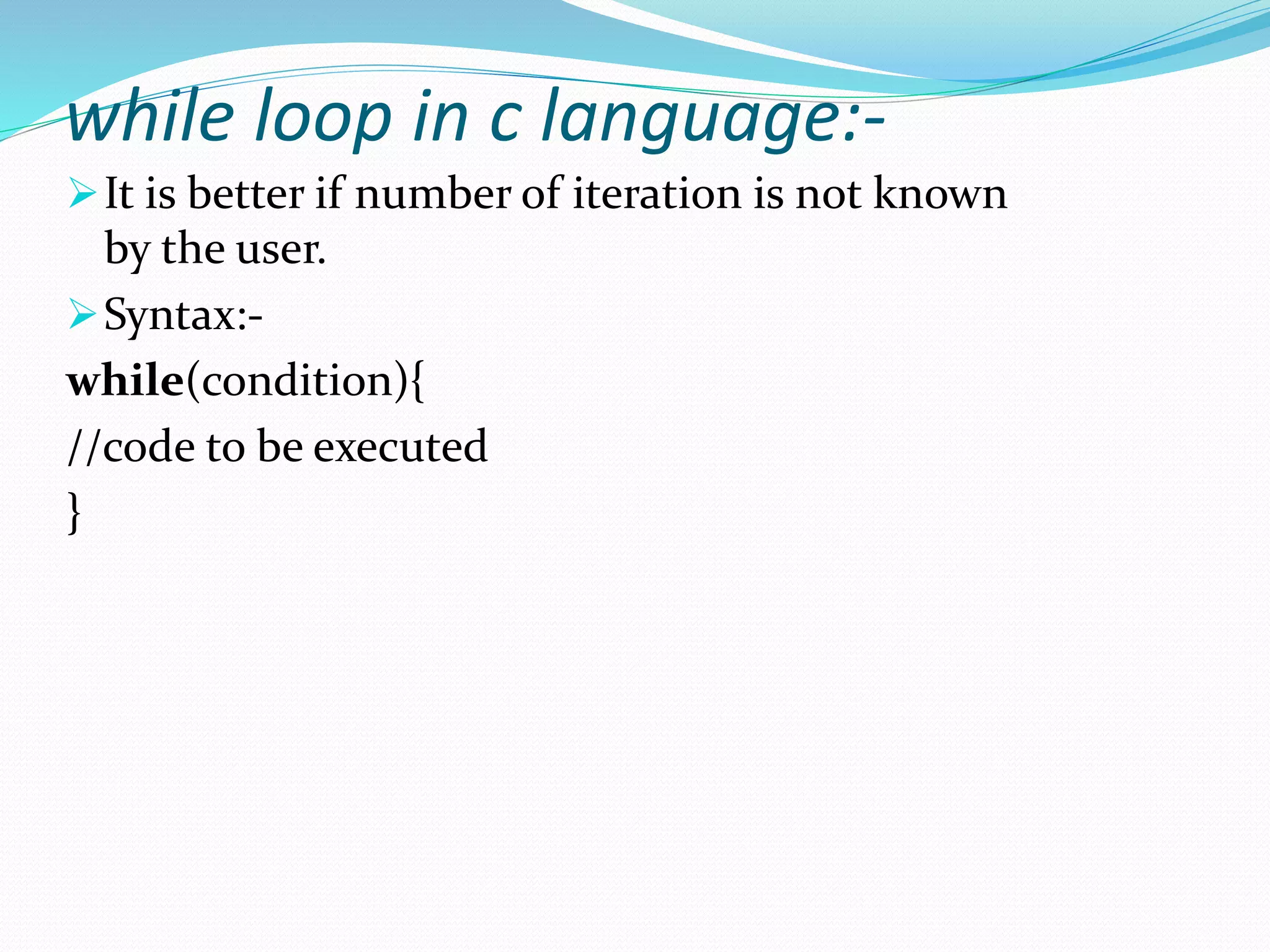
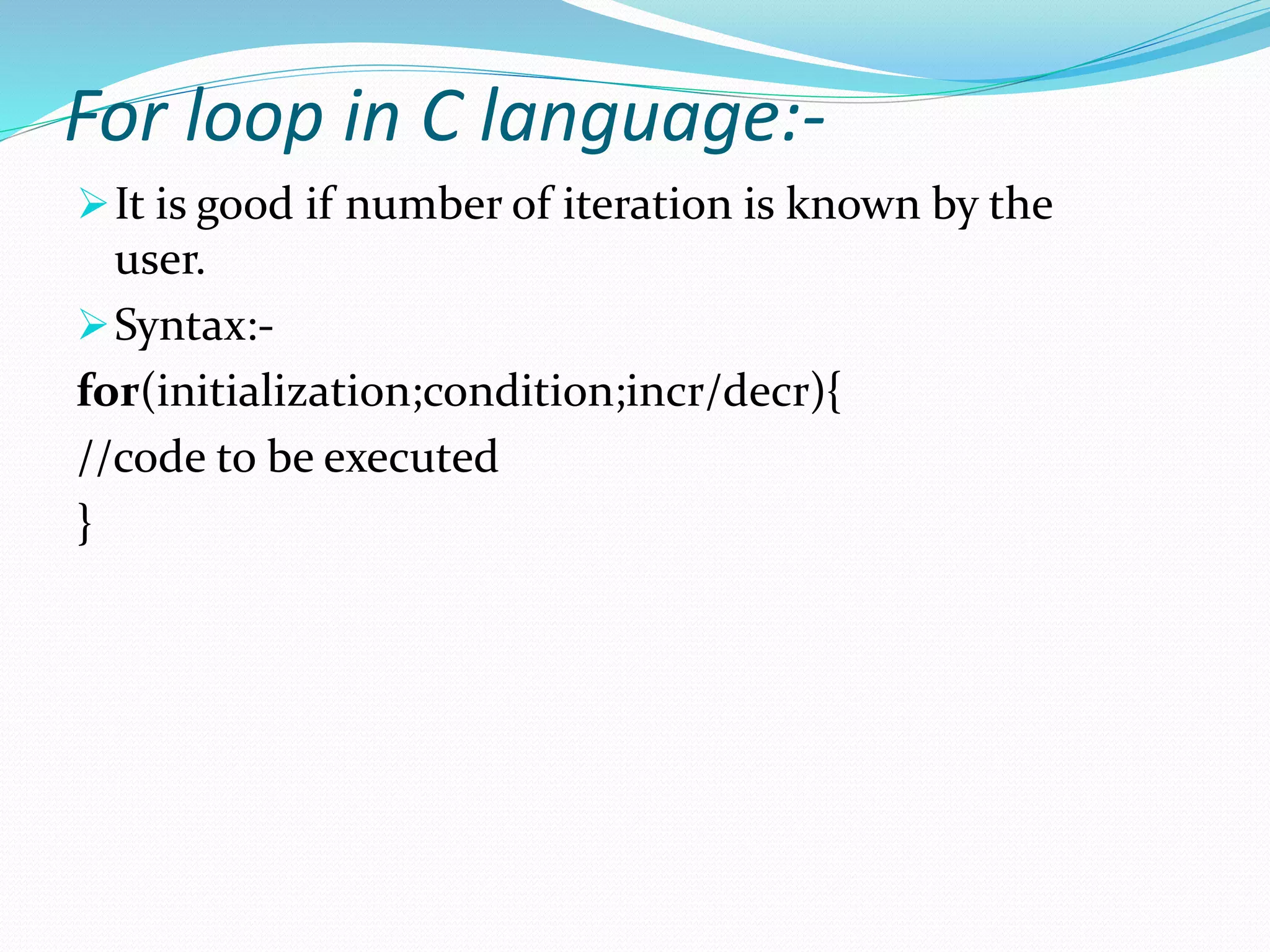
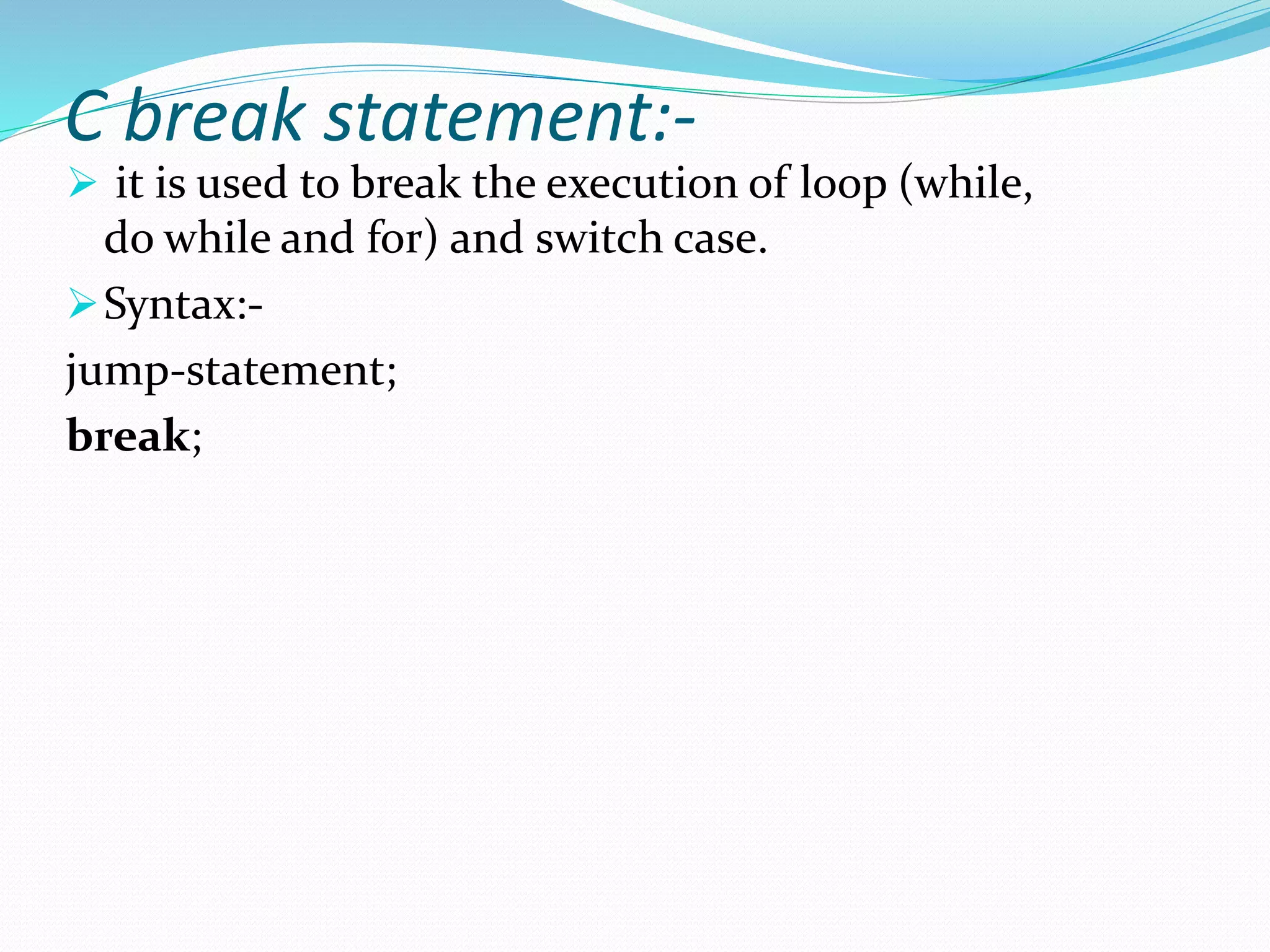

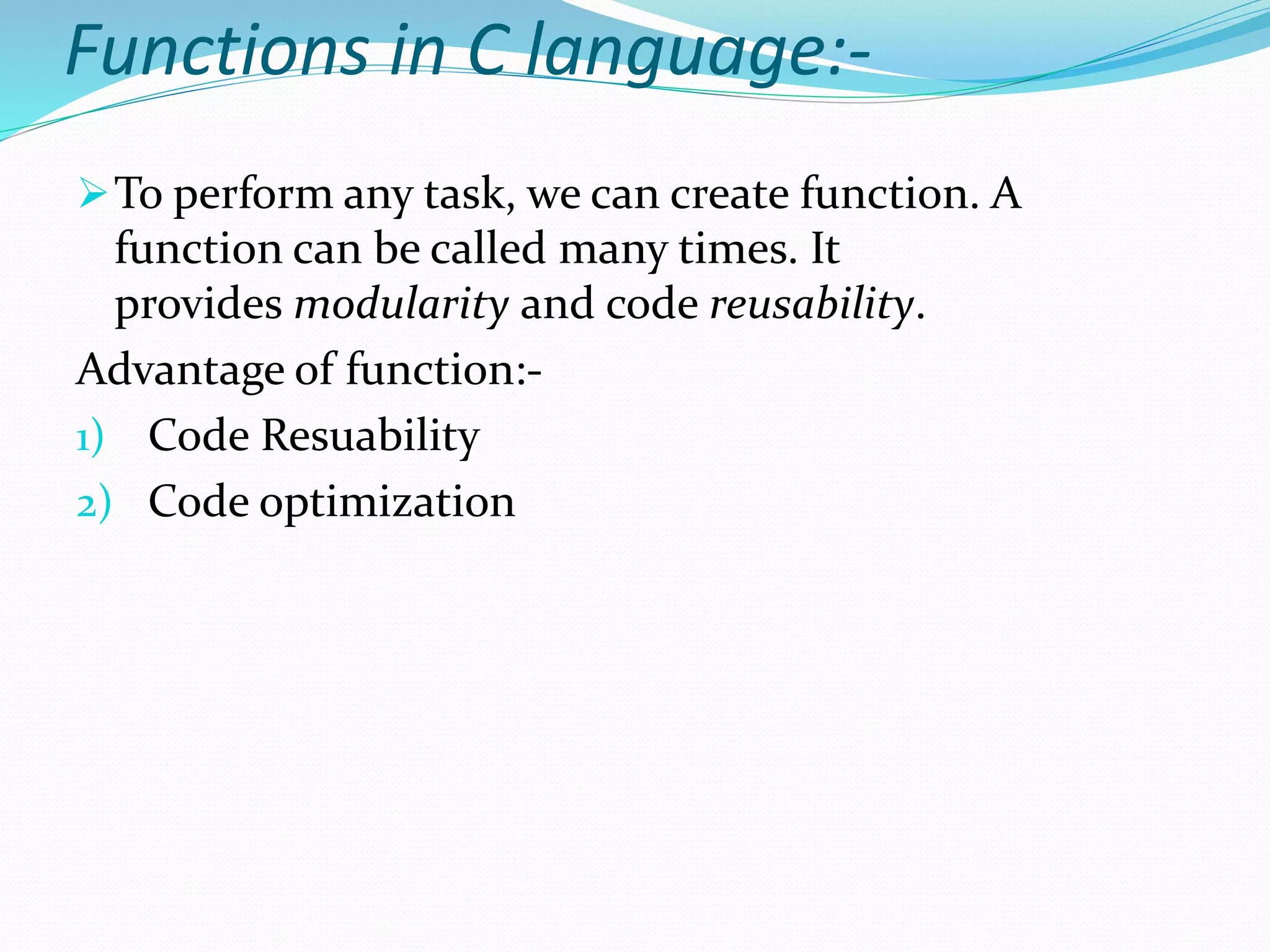

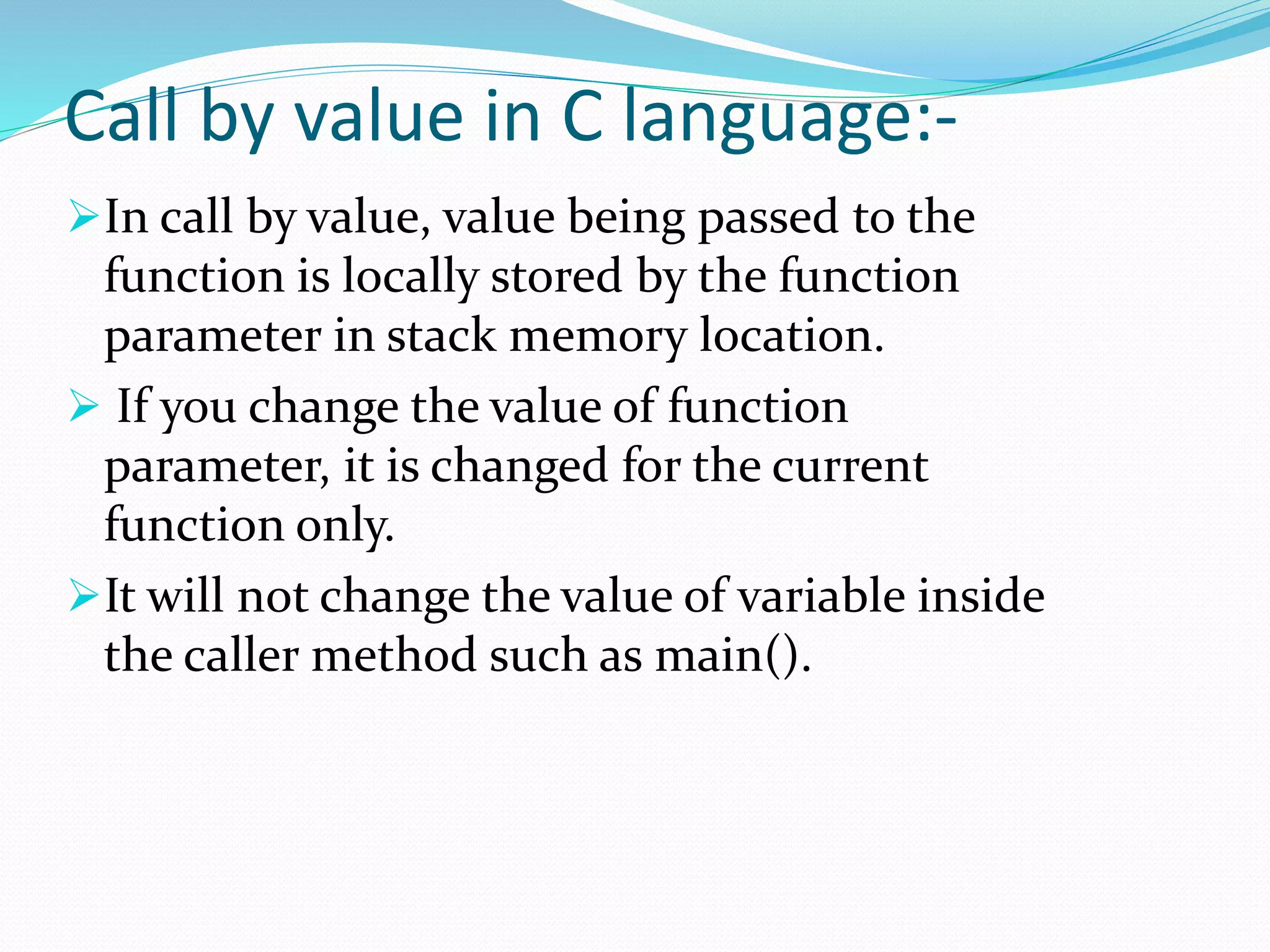
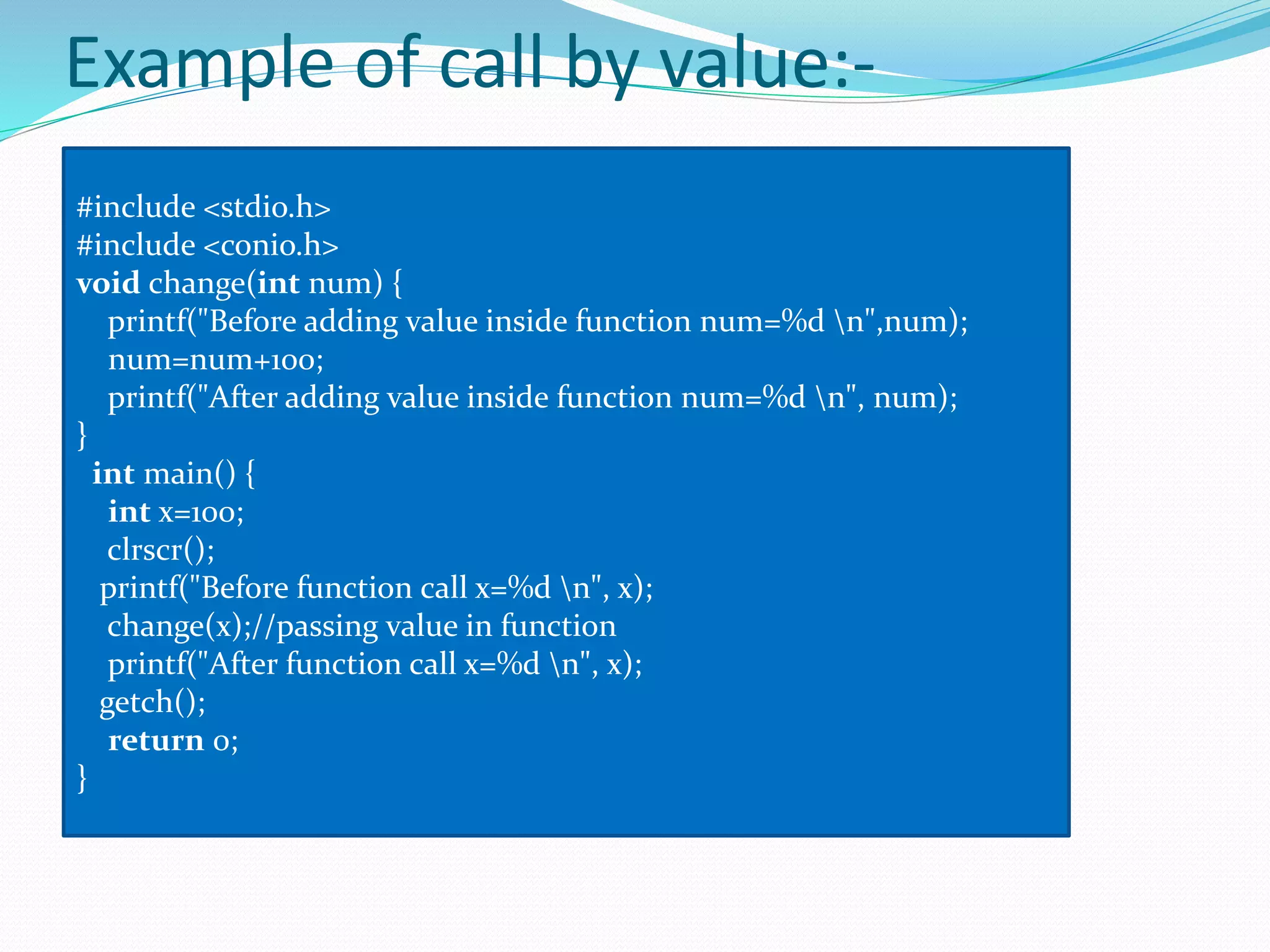
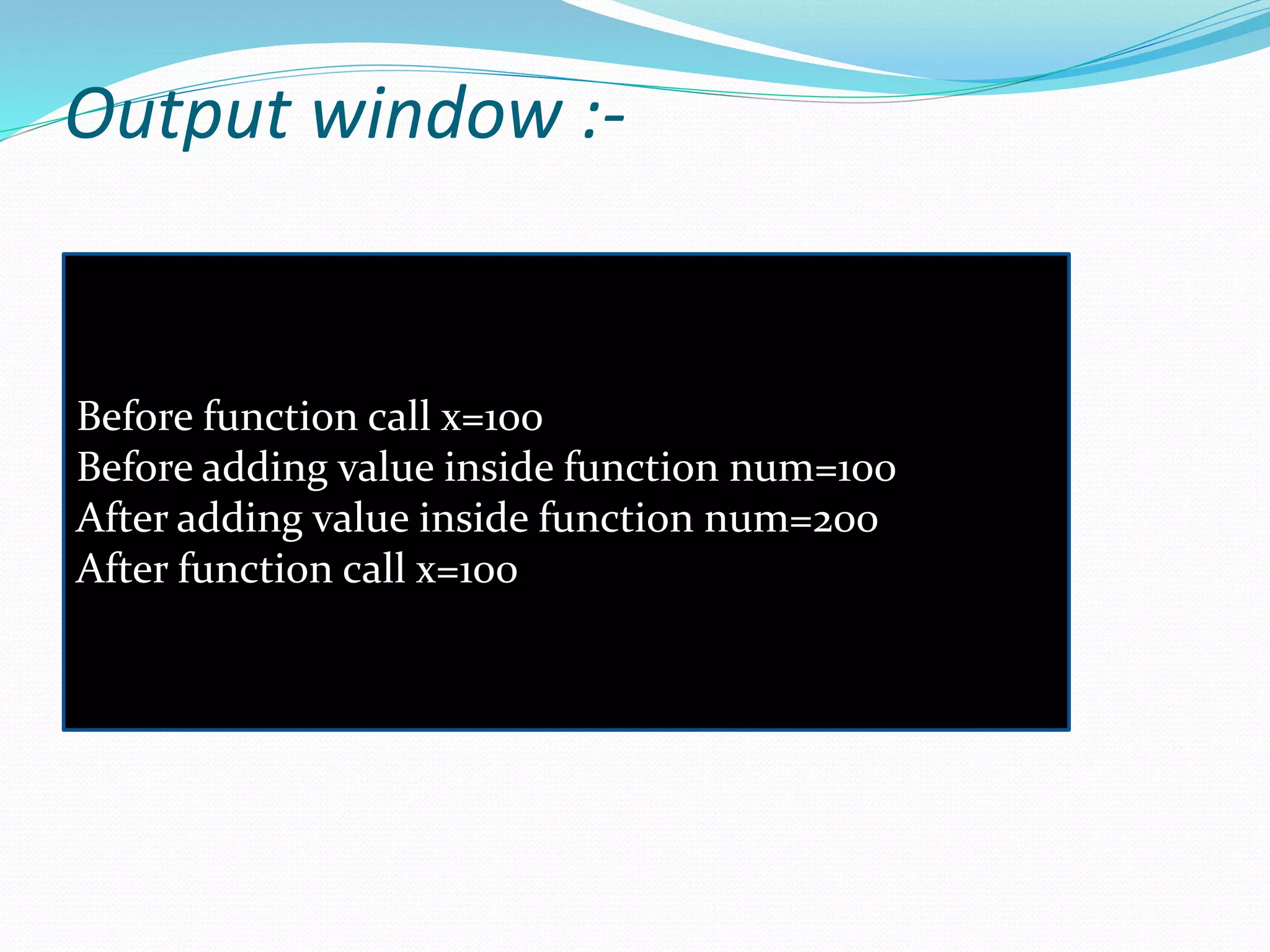

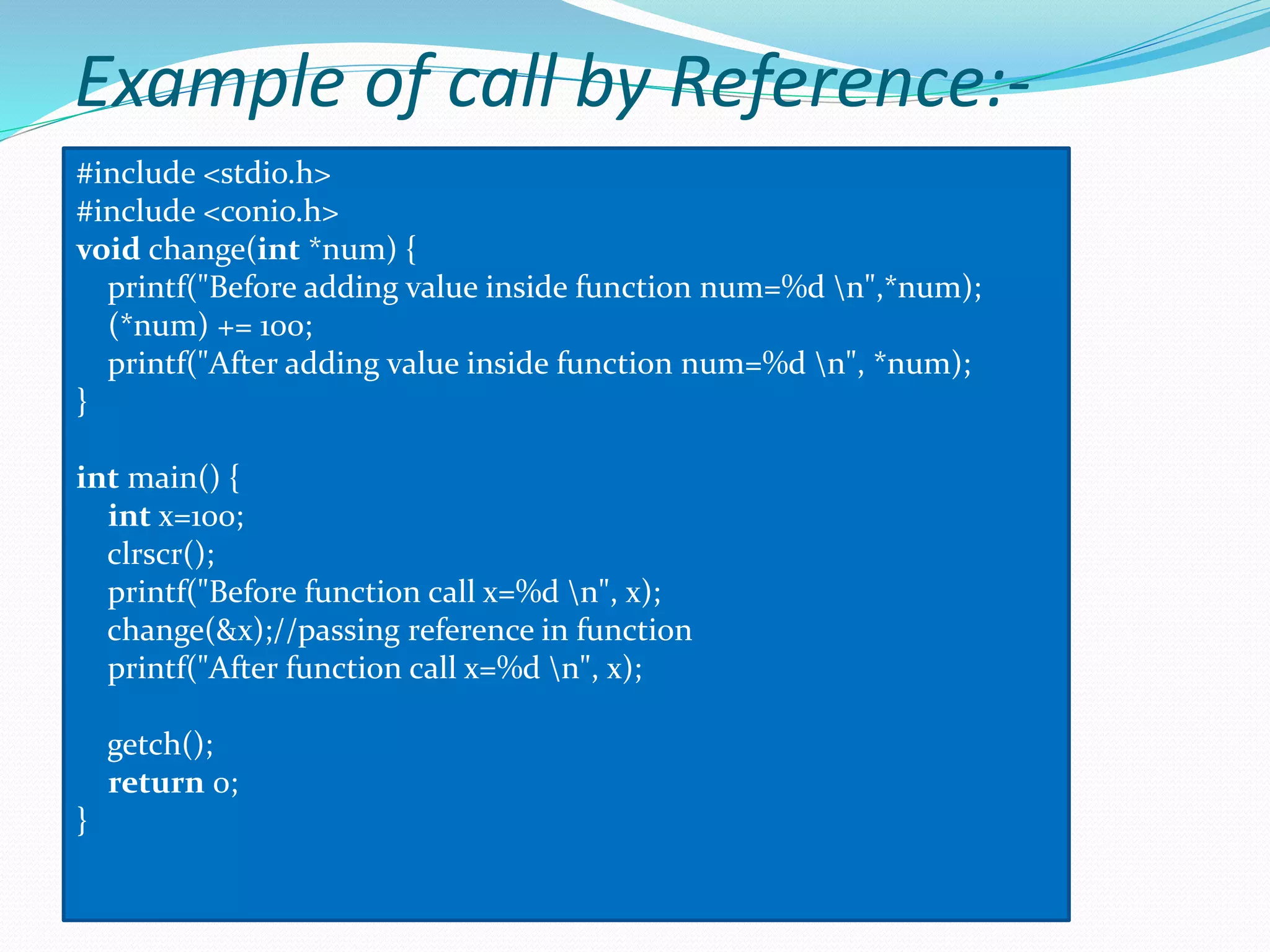


![Array in C:-
Array in C language is a collection or group of
elements (data). All the elements of array
are homogeneous(similar). It has contiguous
memory location.
Declaration of array:-
data_type array_name[array_size];
Eg:-
int marks[7];
Types of array:-
1) 1-D Array
2) 2-D Array](https://image.slidesharecdn.com/introductiontoc-190803091620/75/Introduction-to-c-35-2048.jpg)
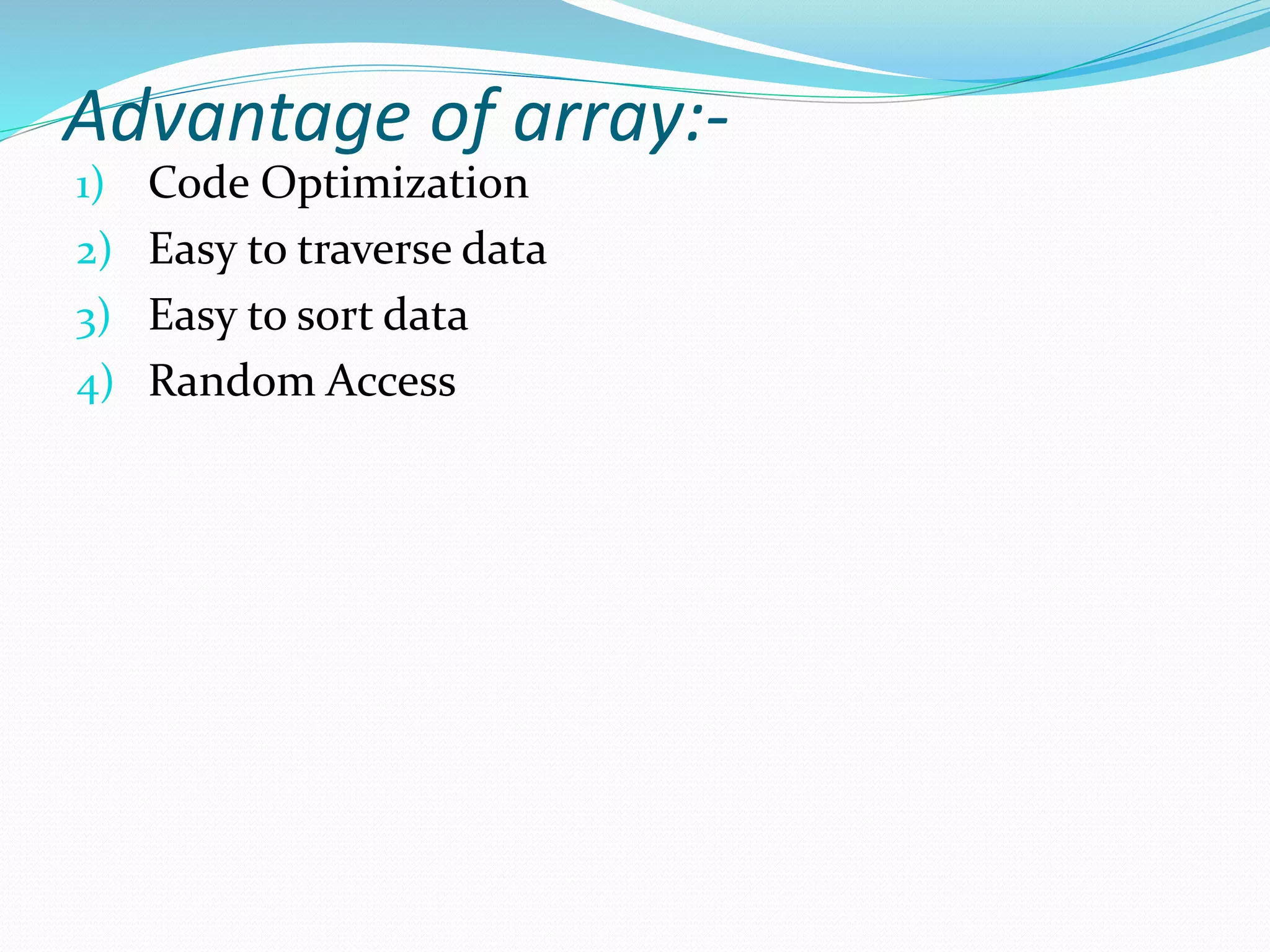
![2-D Array in C:-
2-d Array is represented in the form of rows and
columns, also known as matrix. It is also known
as array of arrays or list of arrays.
Declaration of 2-d array:-
data_type array_name[size1][size2];](https://image.slidesharecdn.com/introductiontoc-190803091620/75/Introduction-to-c-37-2048.jpg)
![Initialization of 2-d array:-
int arr[3][4]={{1,2,3,4},{2,3,4,5},{3,4,5,6}};
C1 C2 C3 C4
R1
R2
R3
1 2 3 4
2 3 4 5
3 4 5 6](https://image.slidesharecdn.com/introductiontoc-190803091620/75/Introduction-to-c-38-2048.jpg)
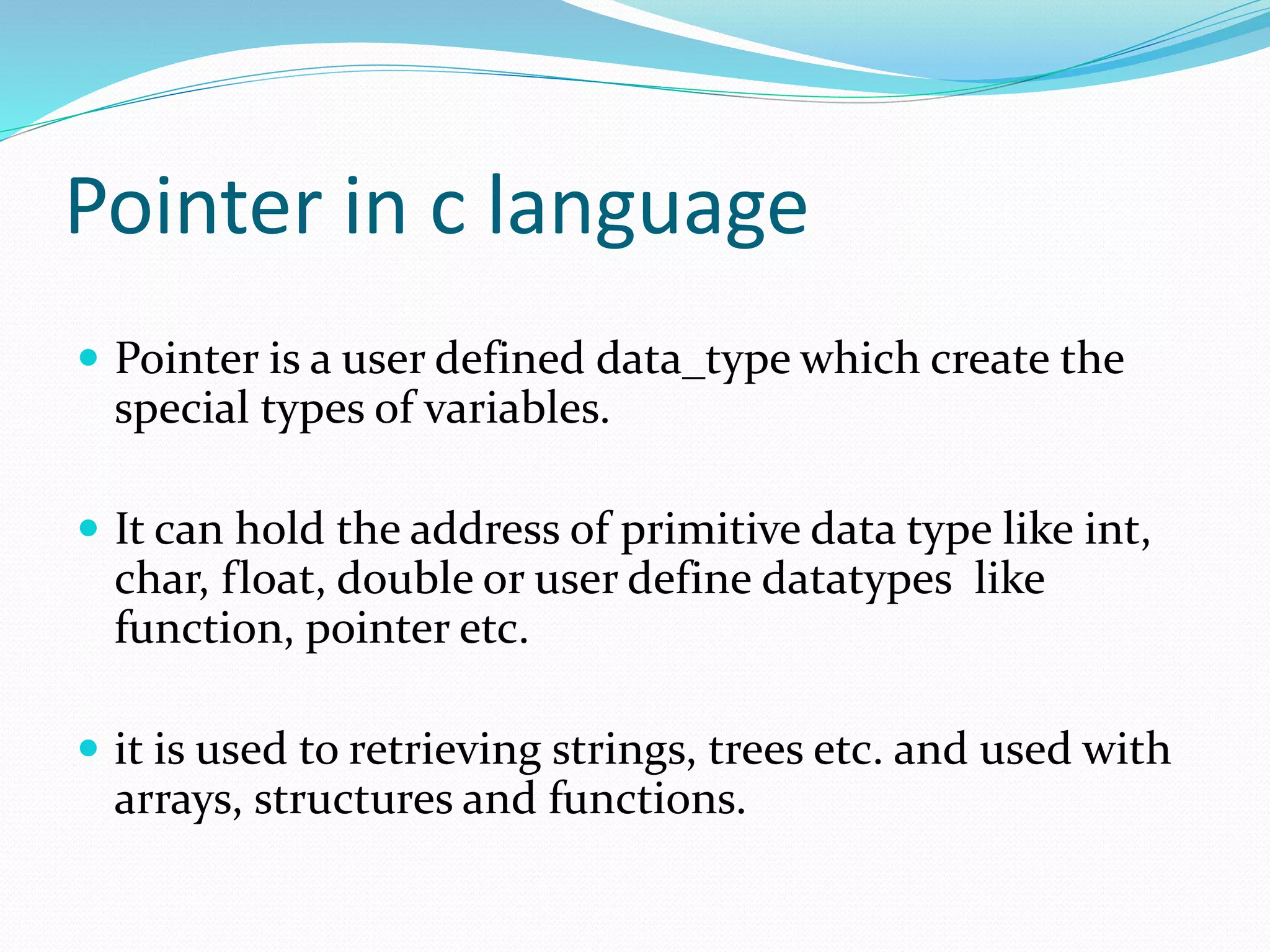
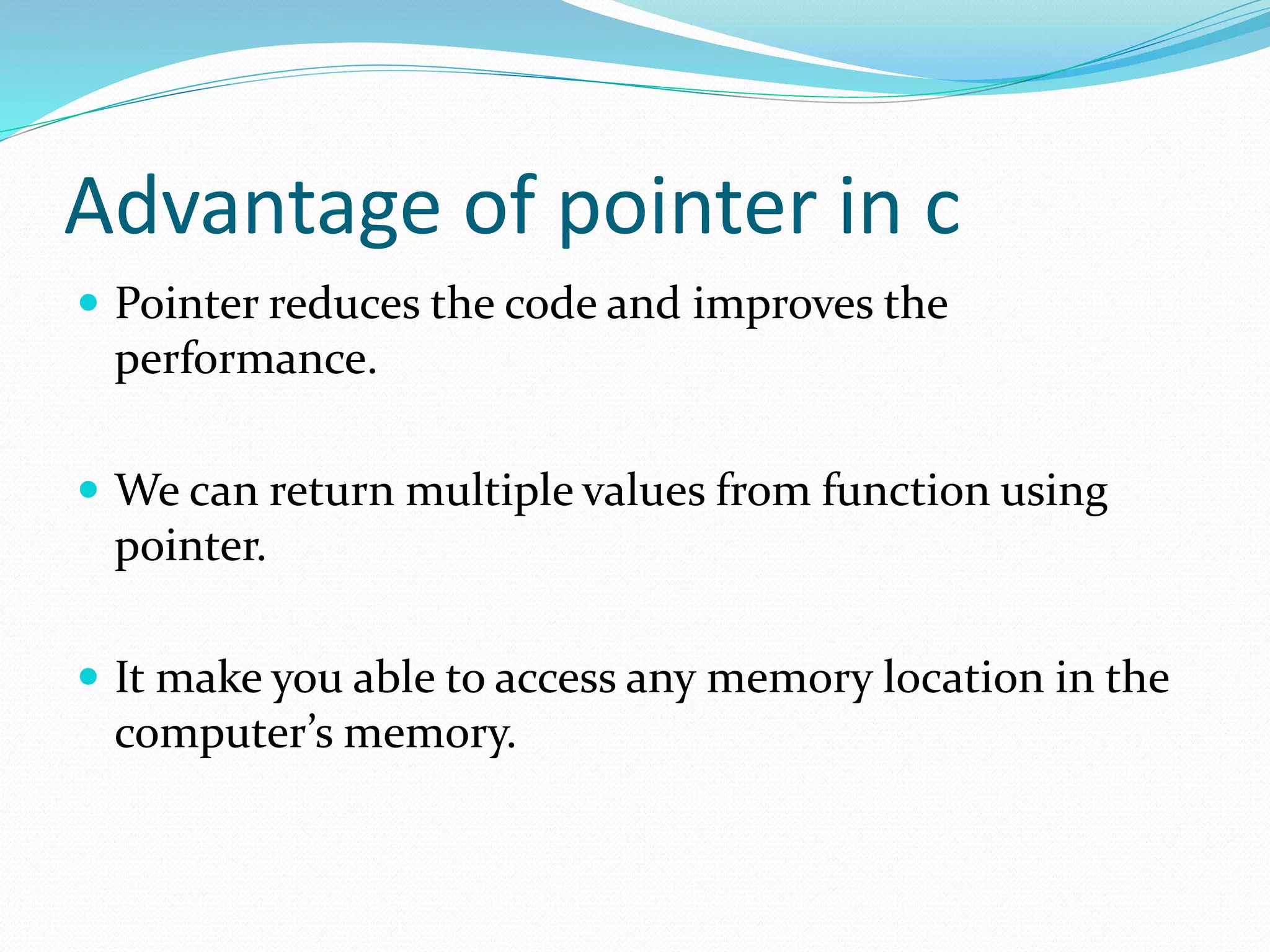
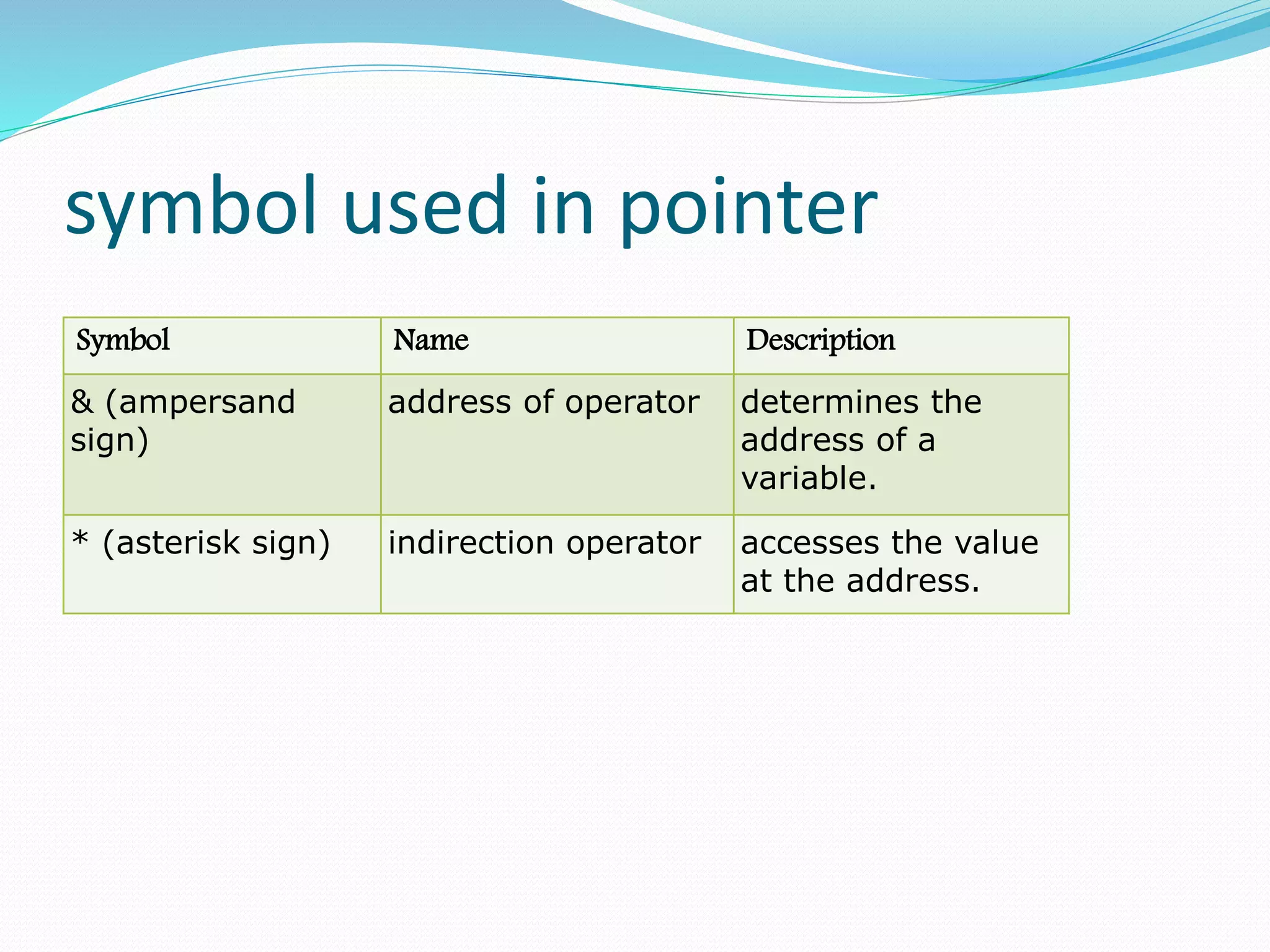
![Declaration of pointerSyntax:-
int *ptr;
int (*ptr)();
int (*ptr)[2];
For e.g.-
int a=5; // a= variable name//
int * ptr; // value of variable= 5//
ptr=&a; // Address where it has stored in
memory : 1025 (assume) //](https://image.slidesharecdn.com/introductiontoc-190803091620/75/Introduction-to-c-42-2048.jpg)
